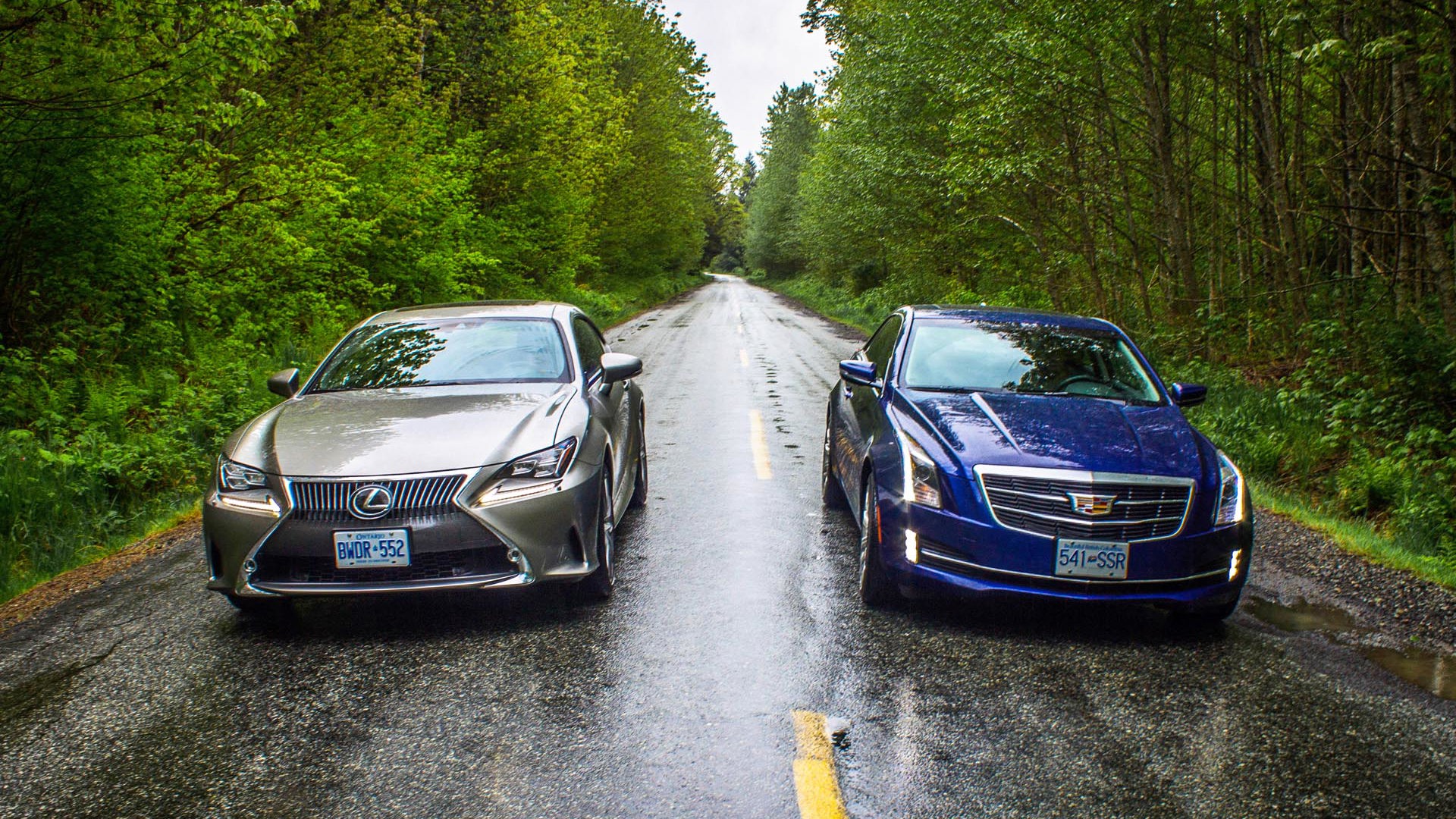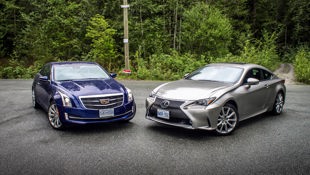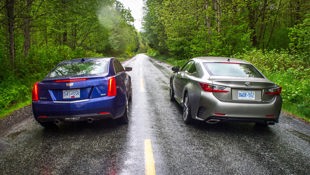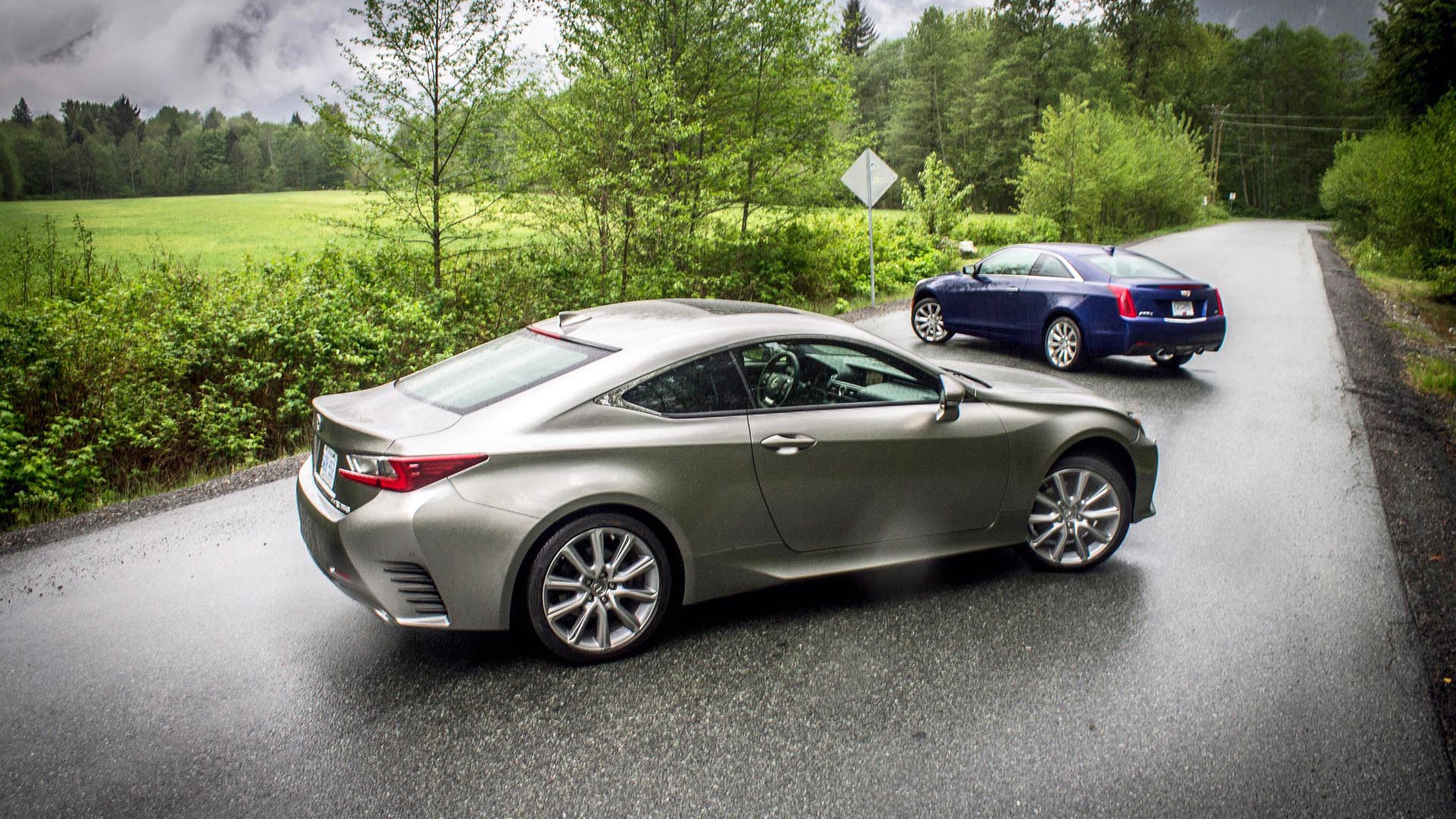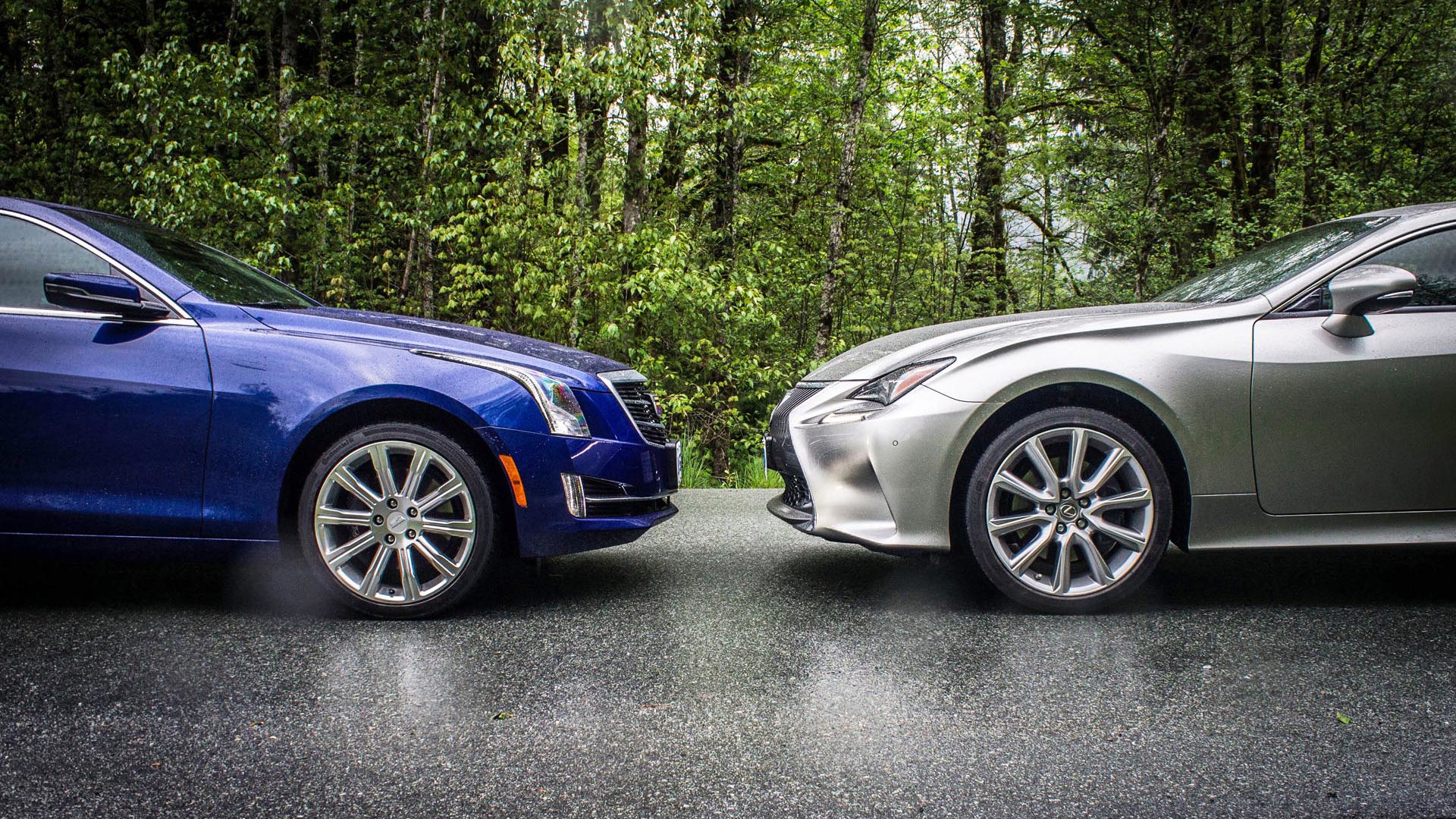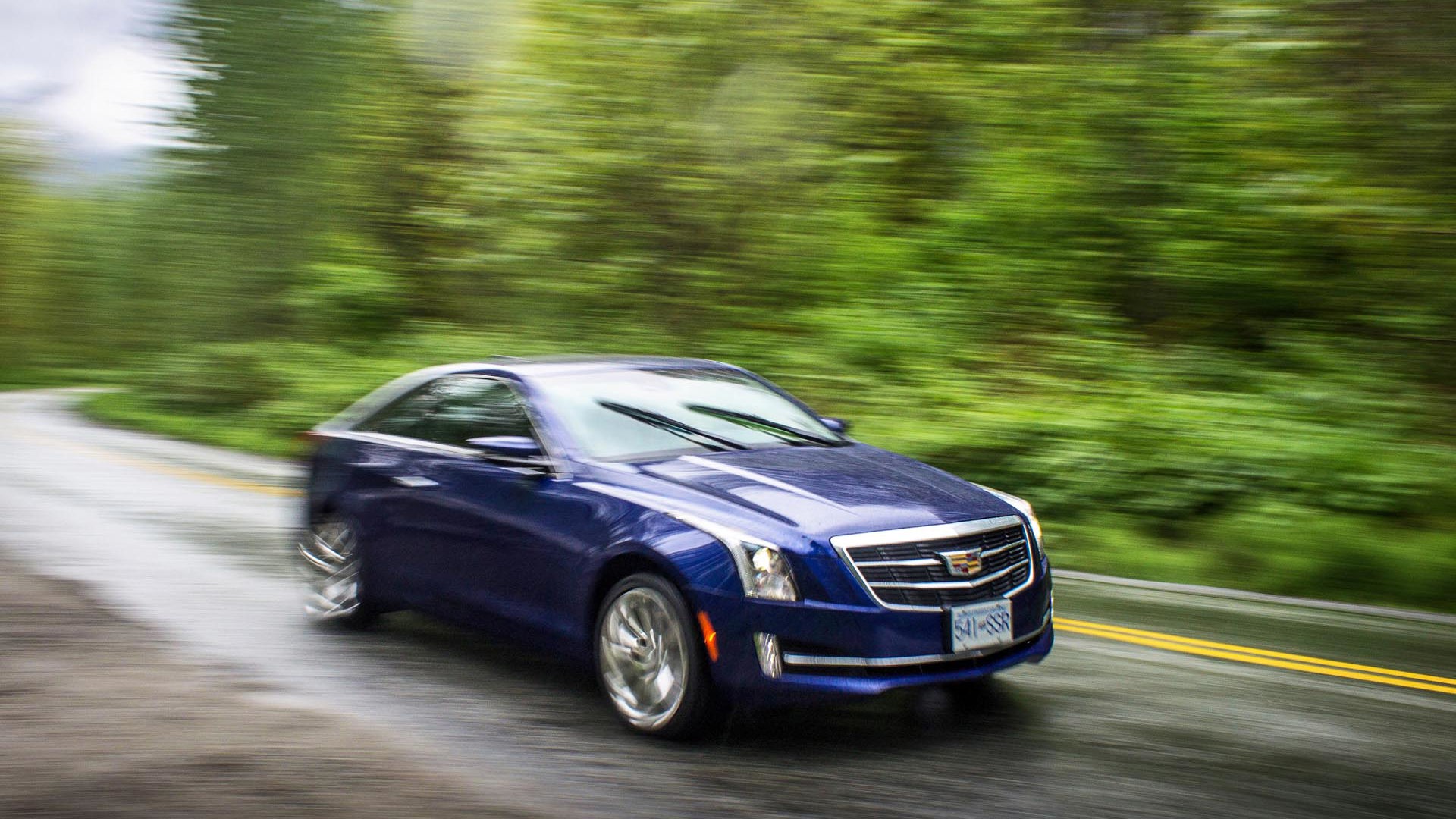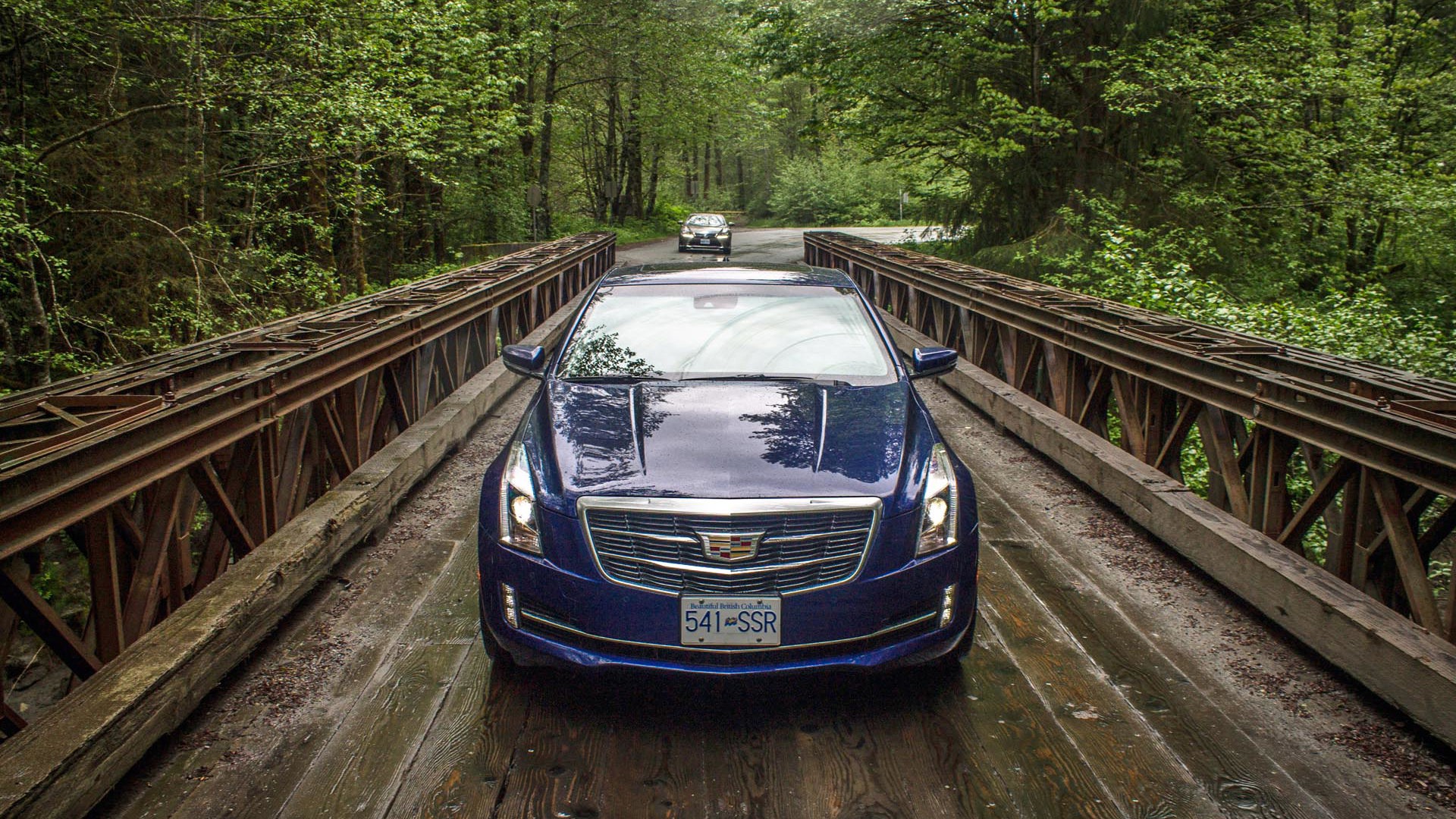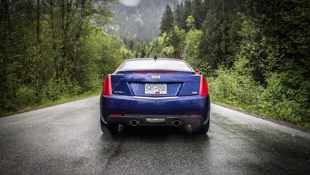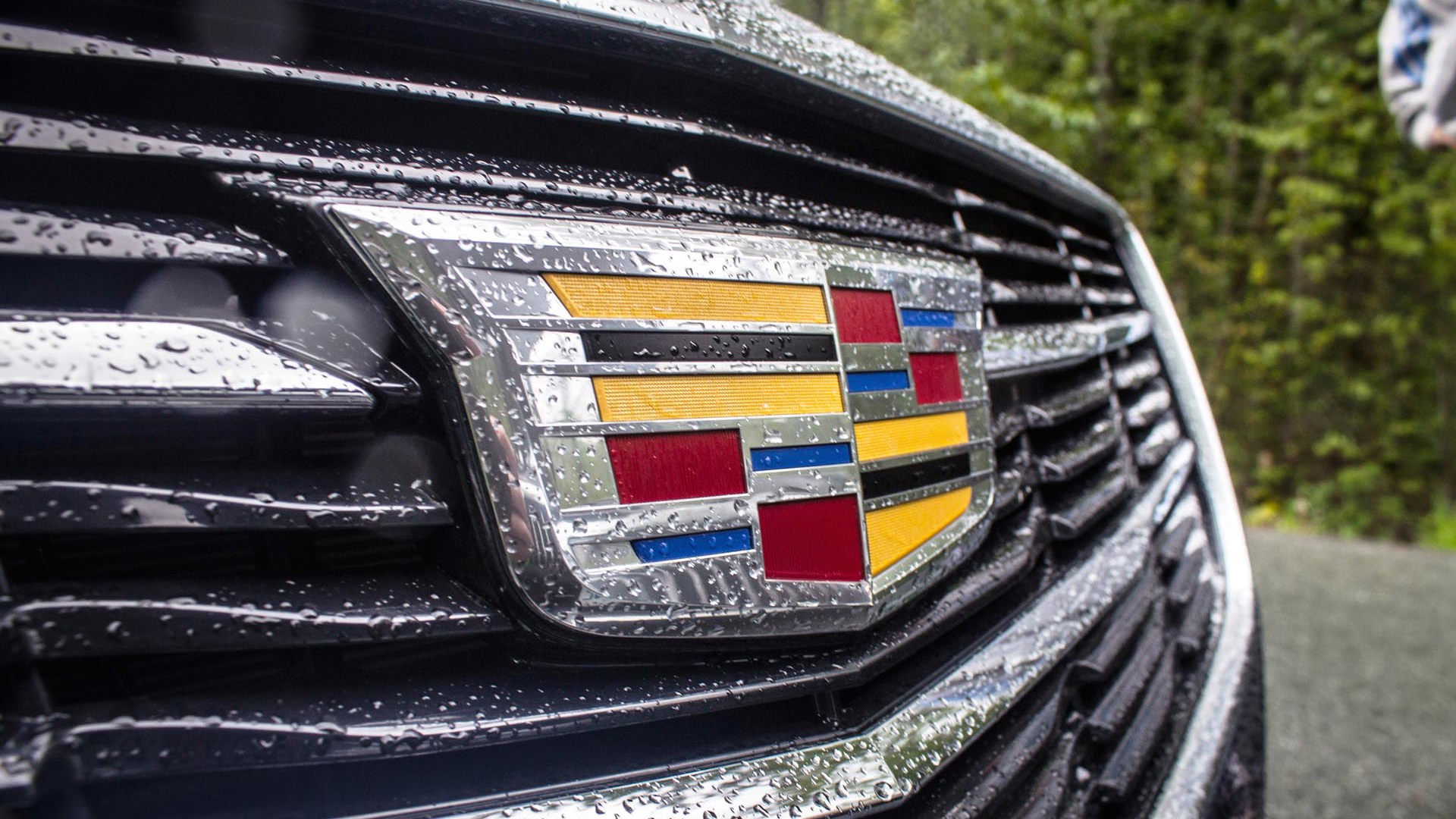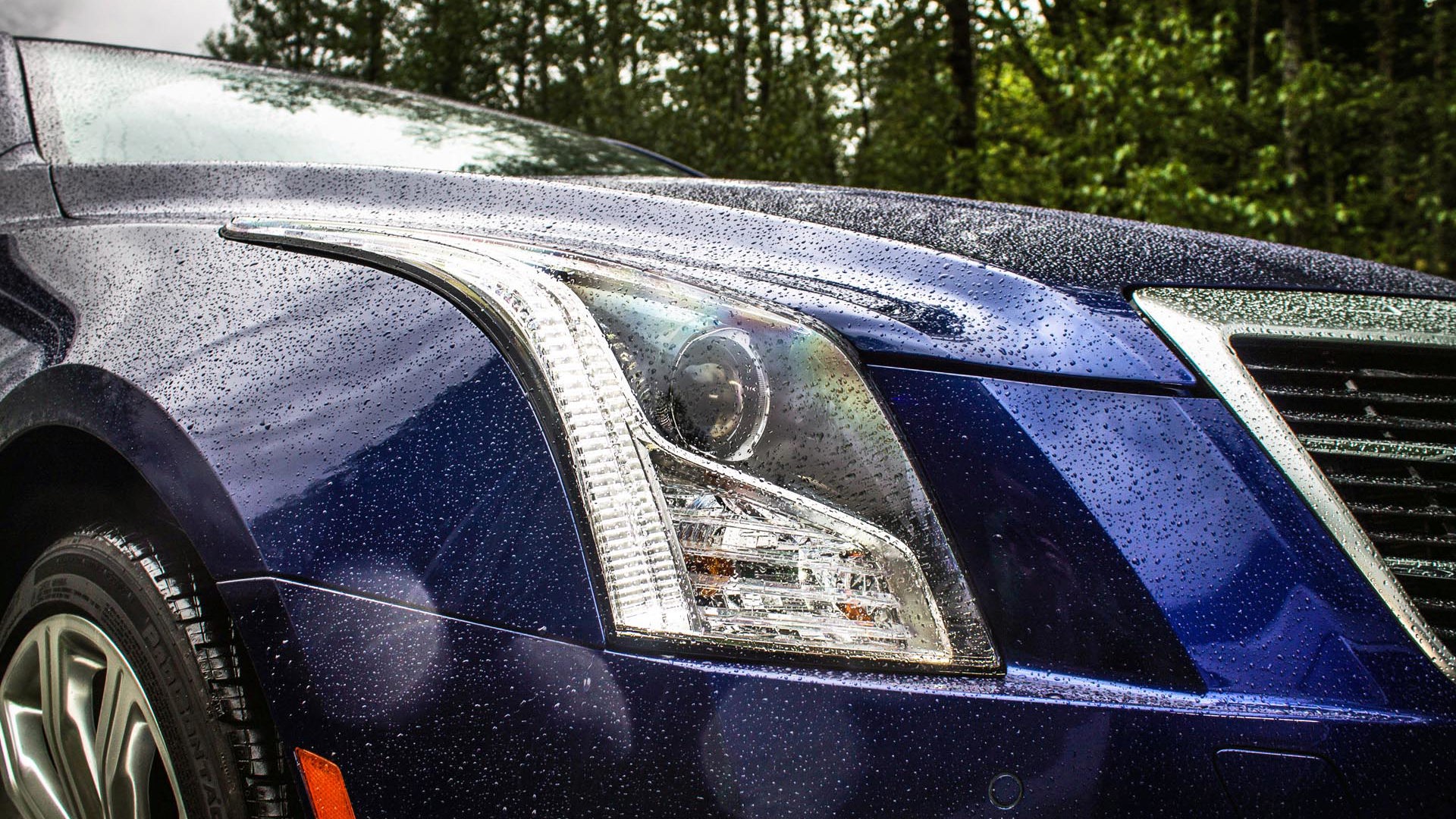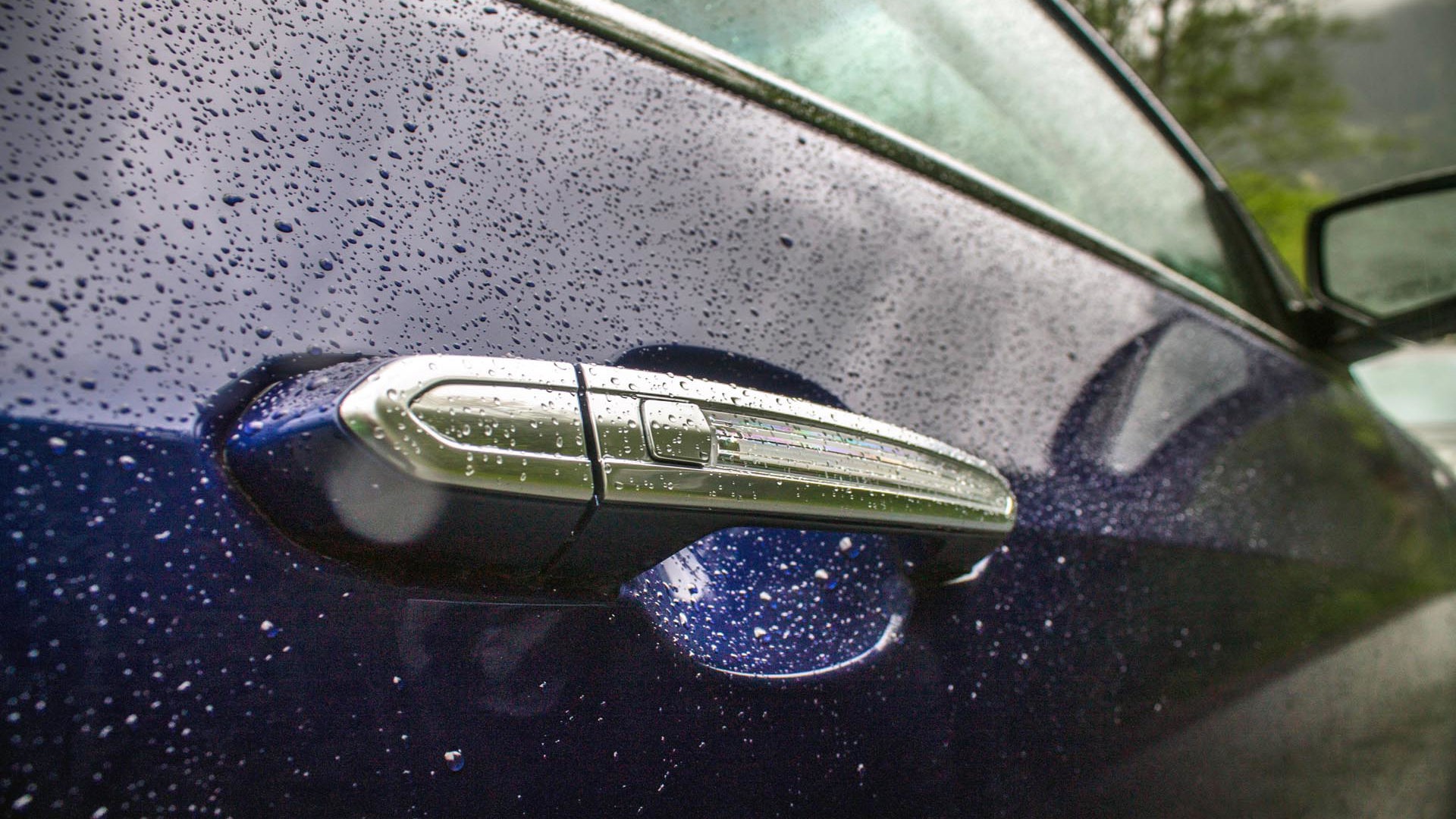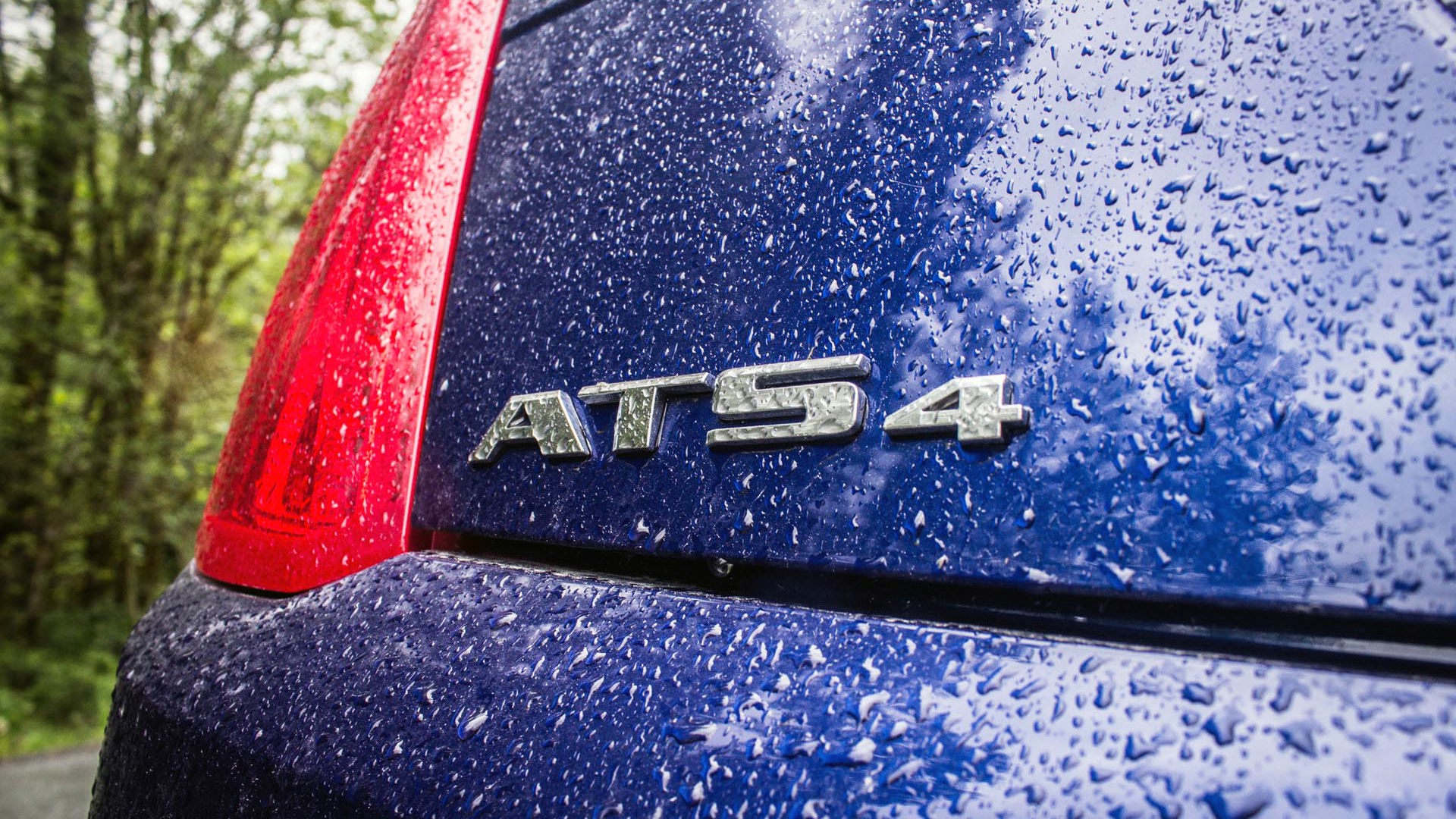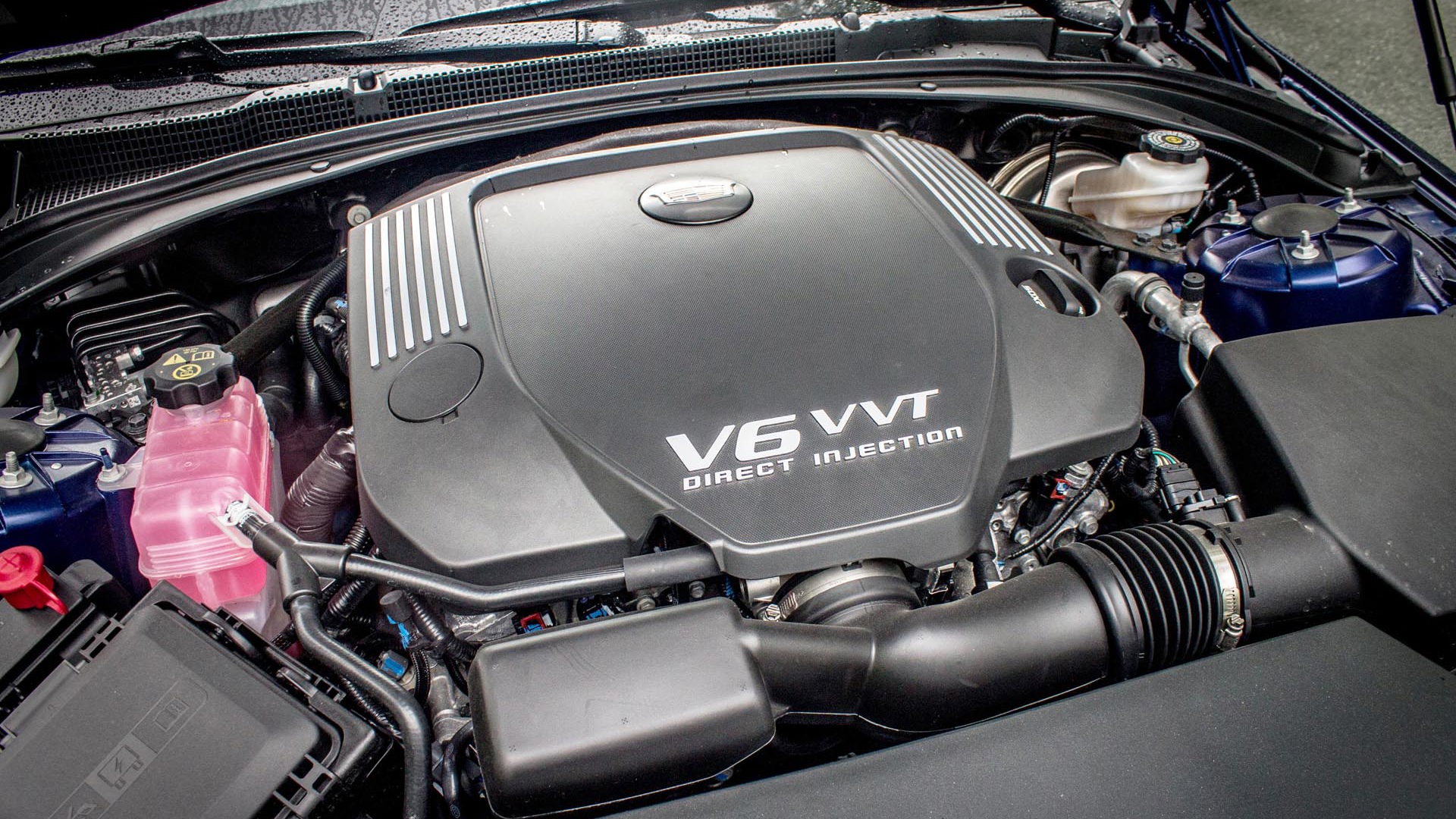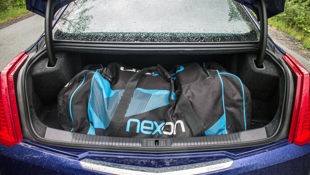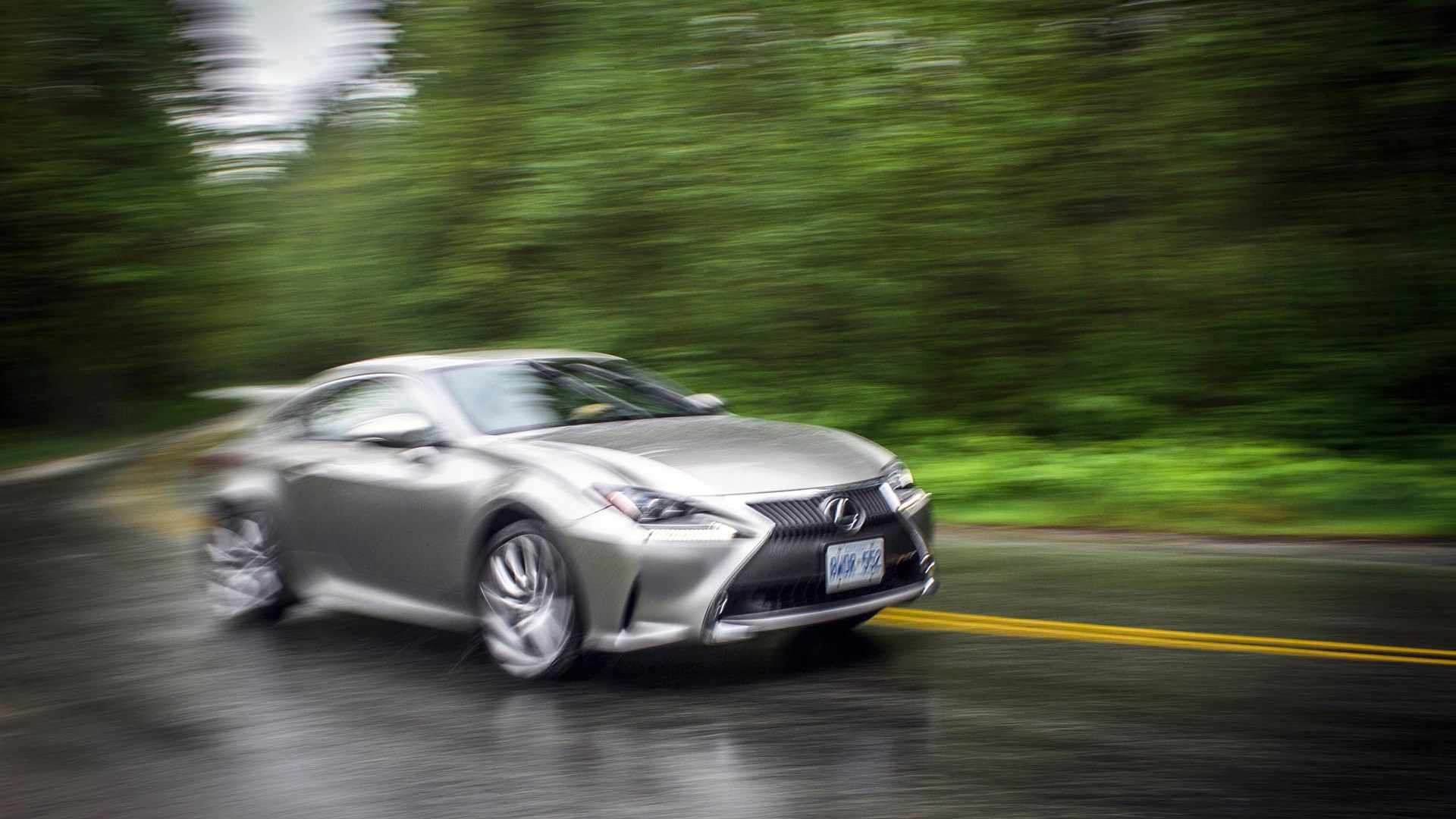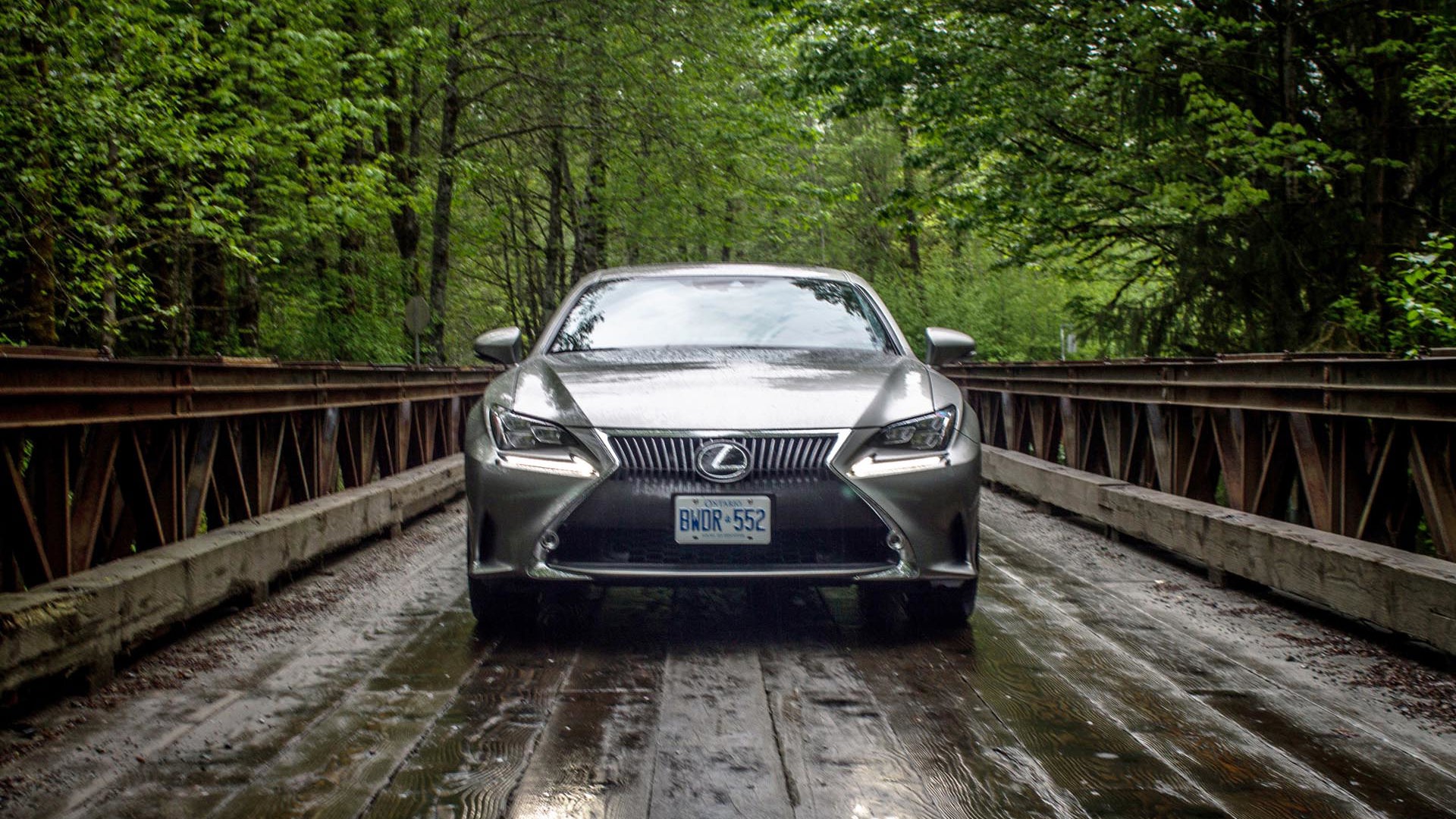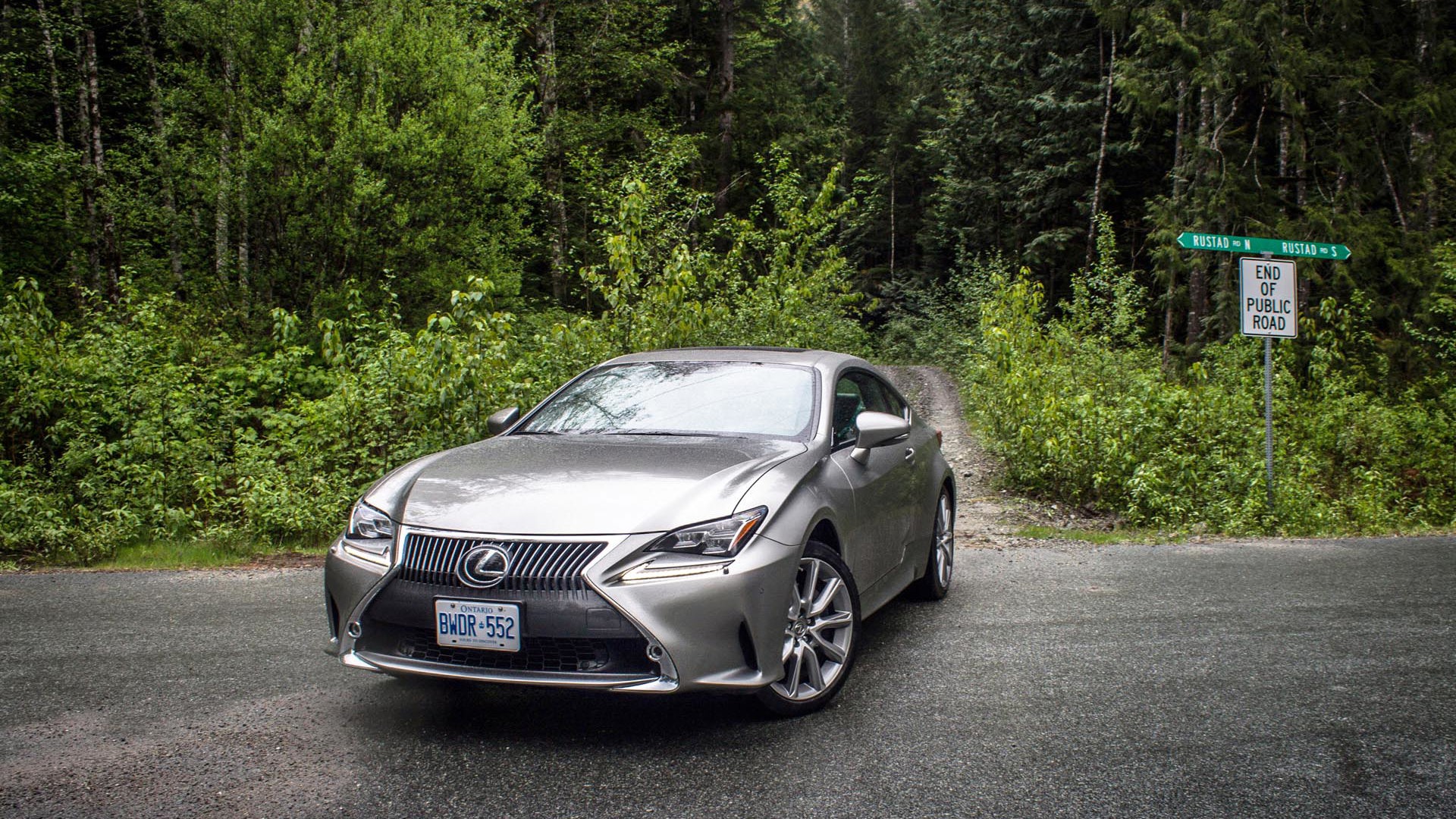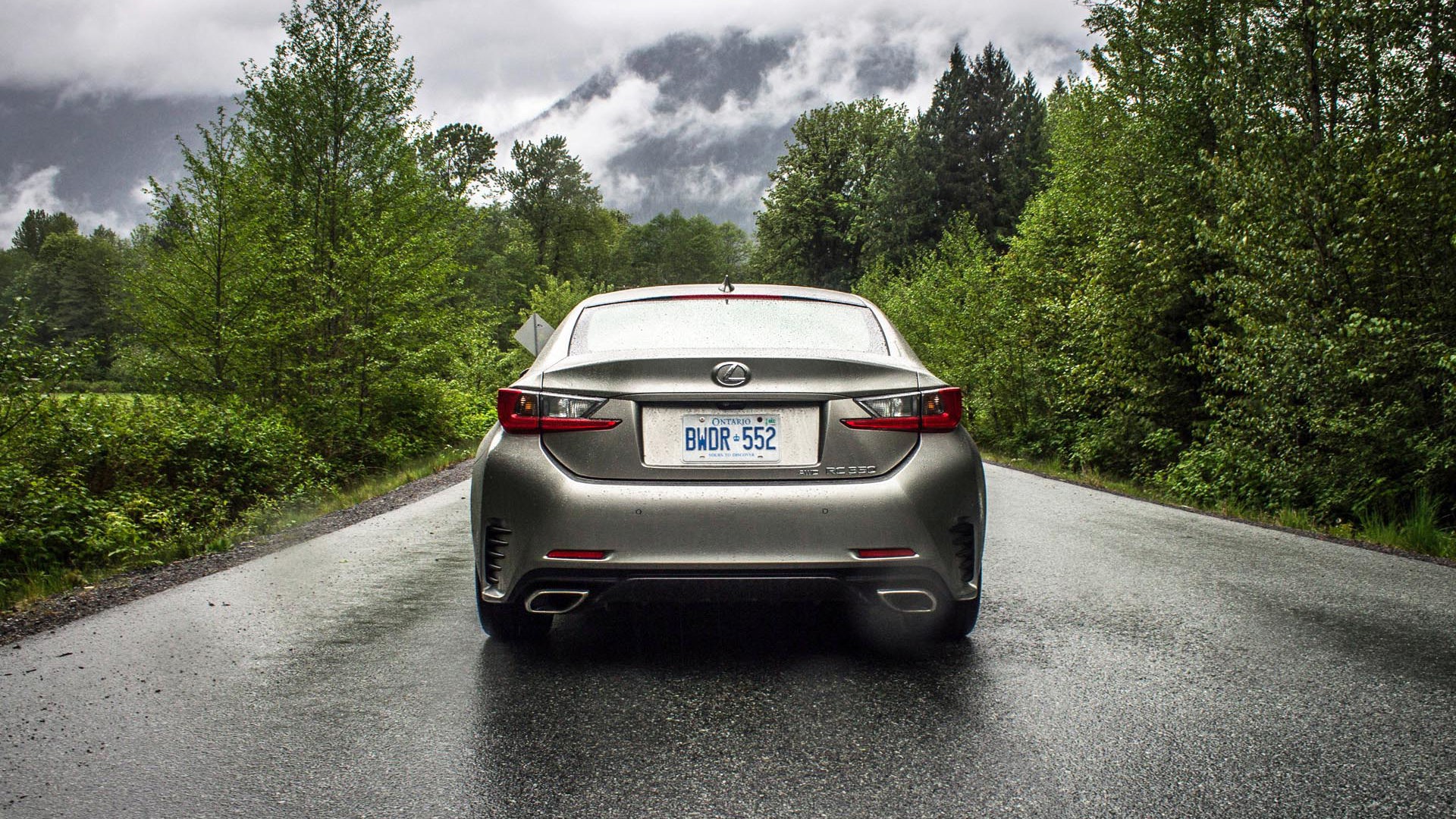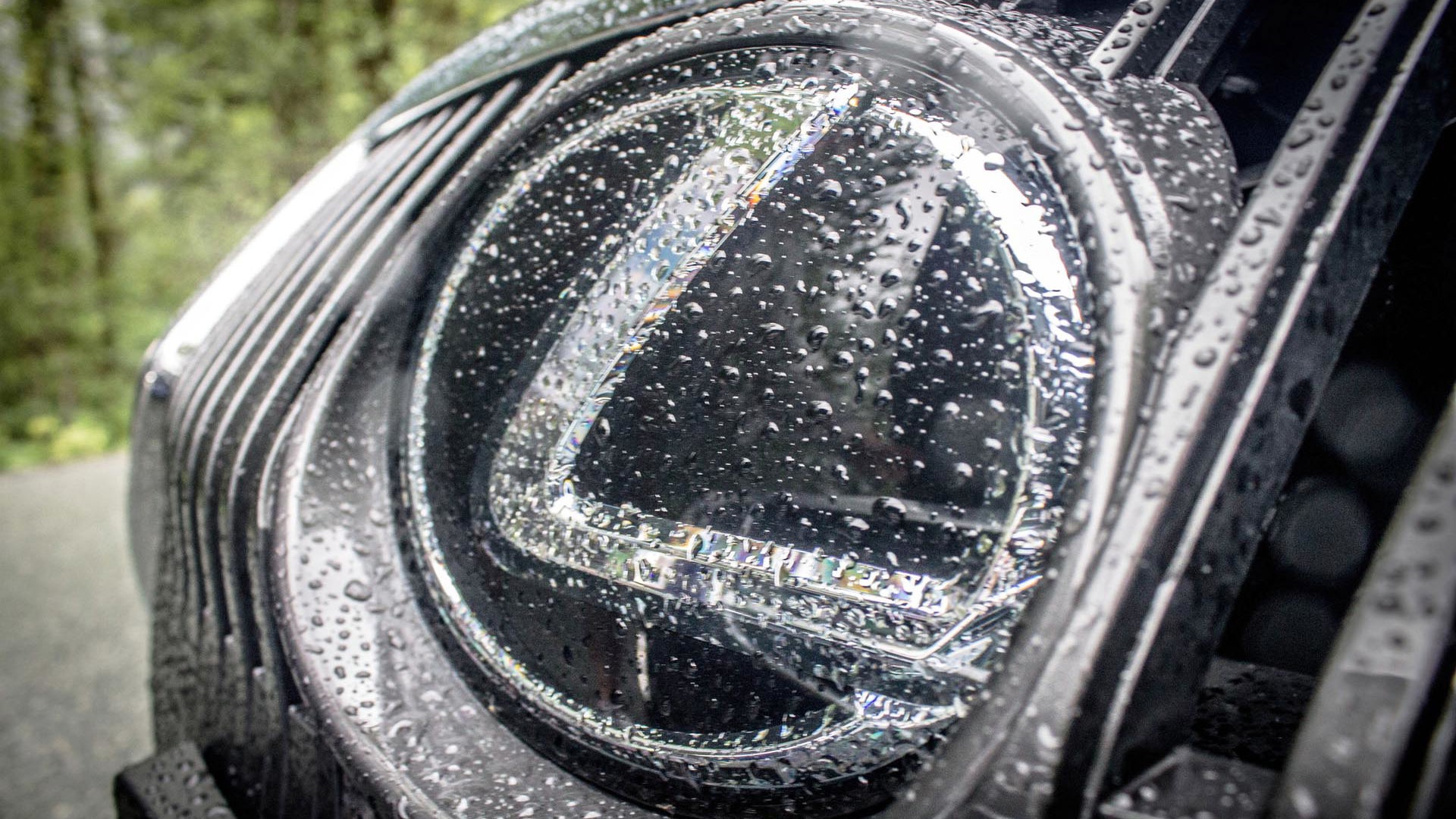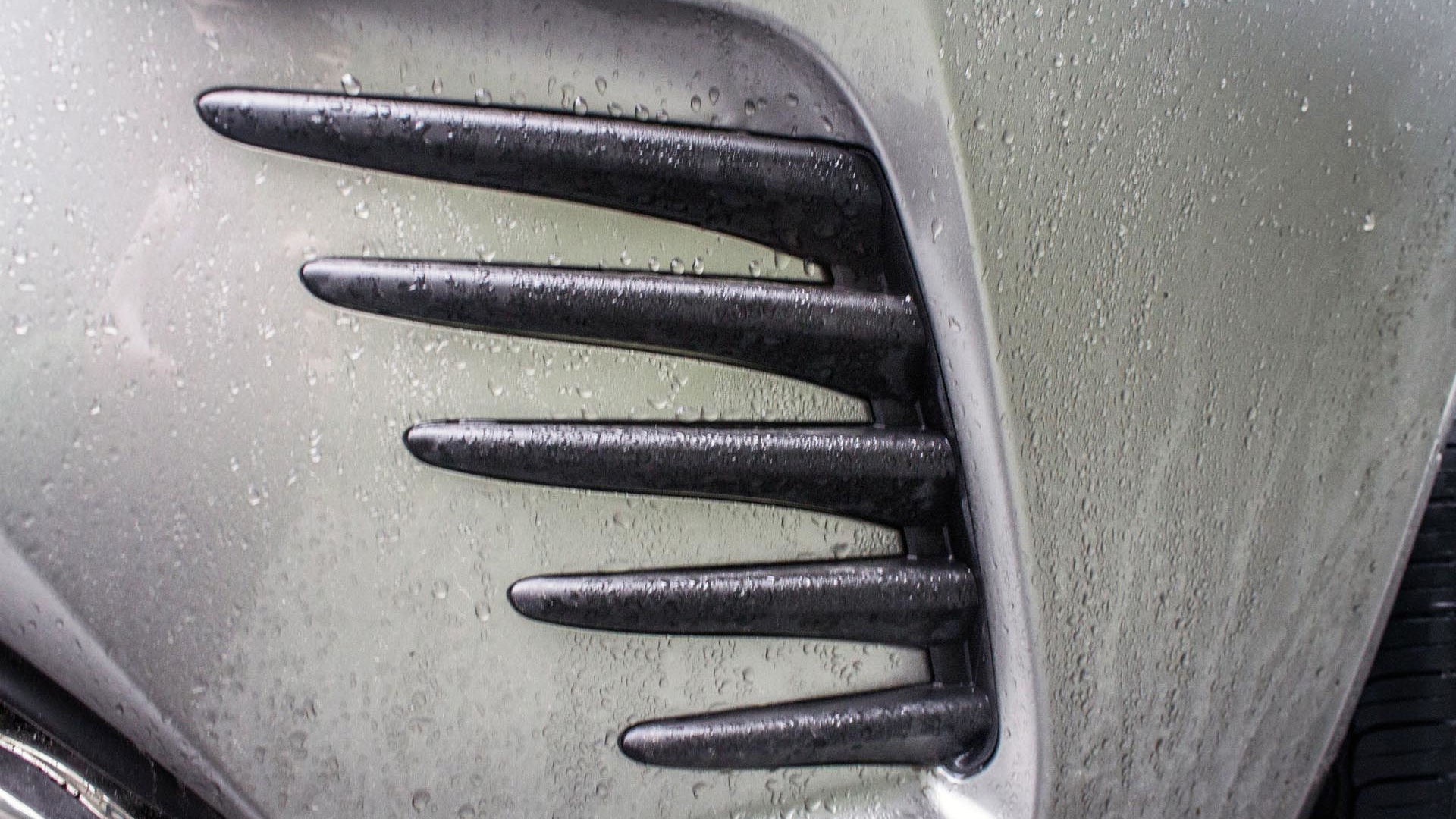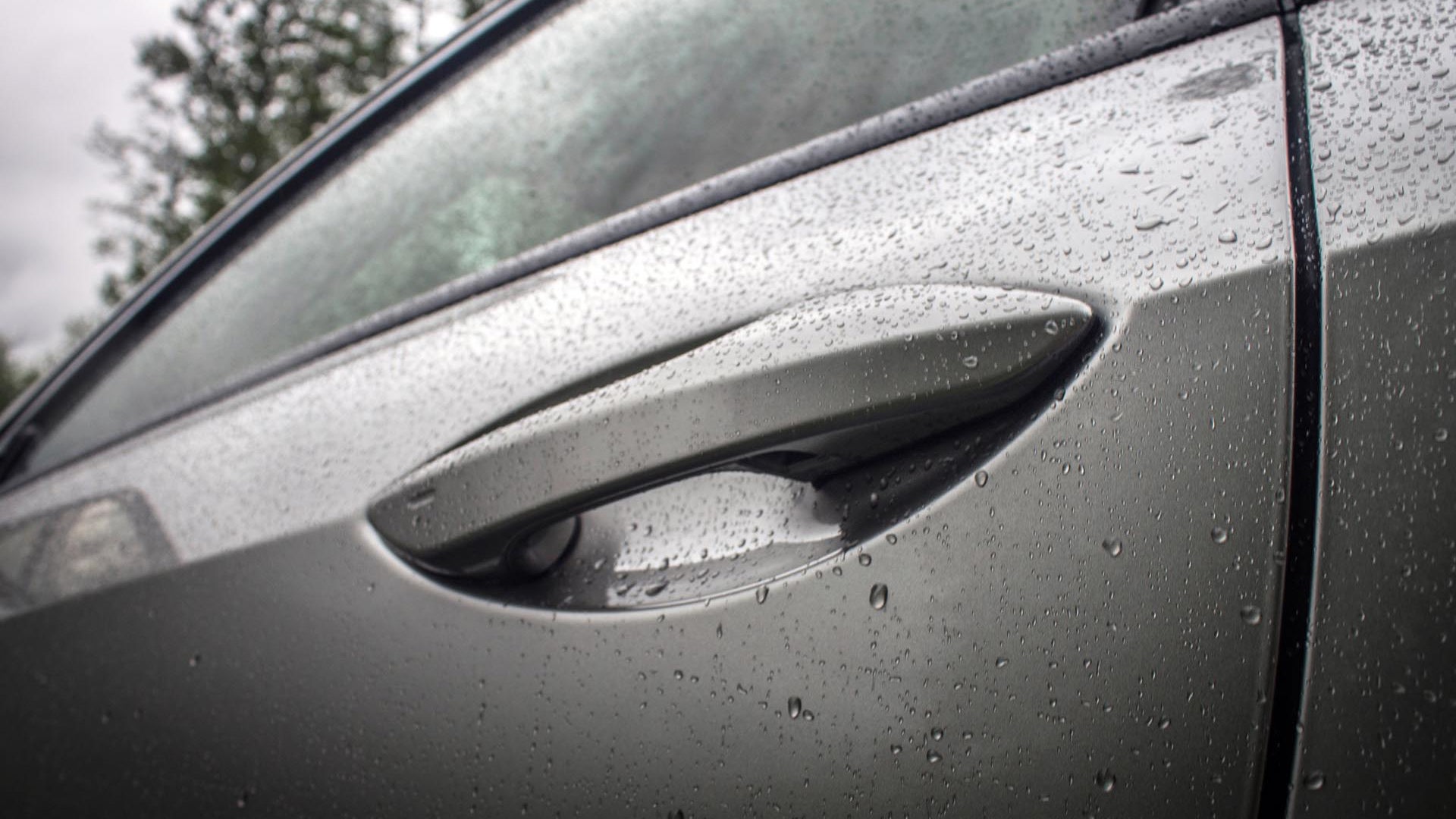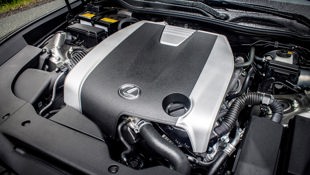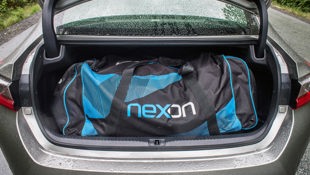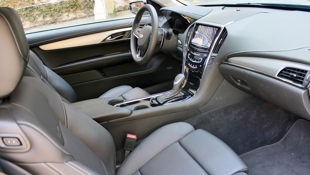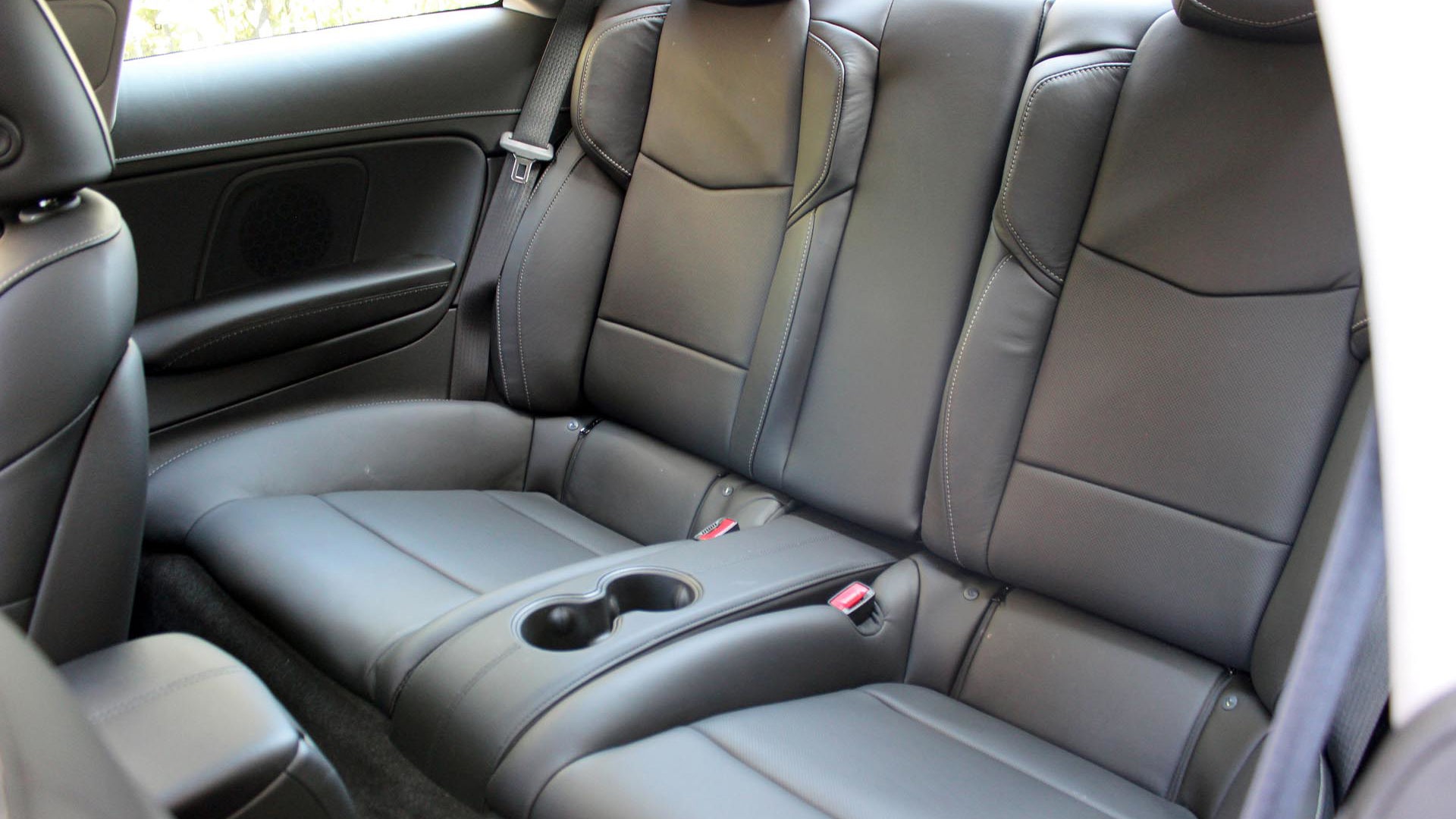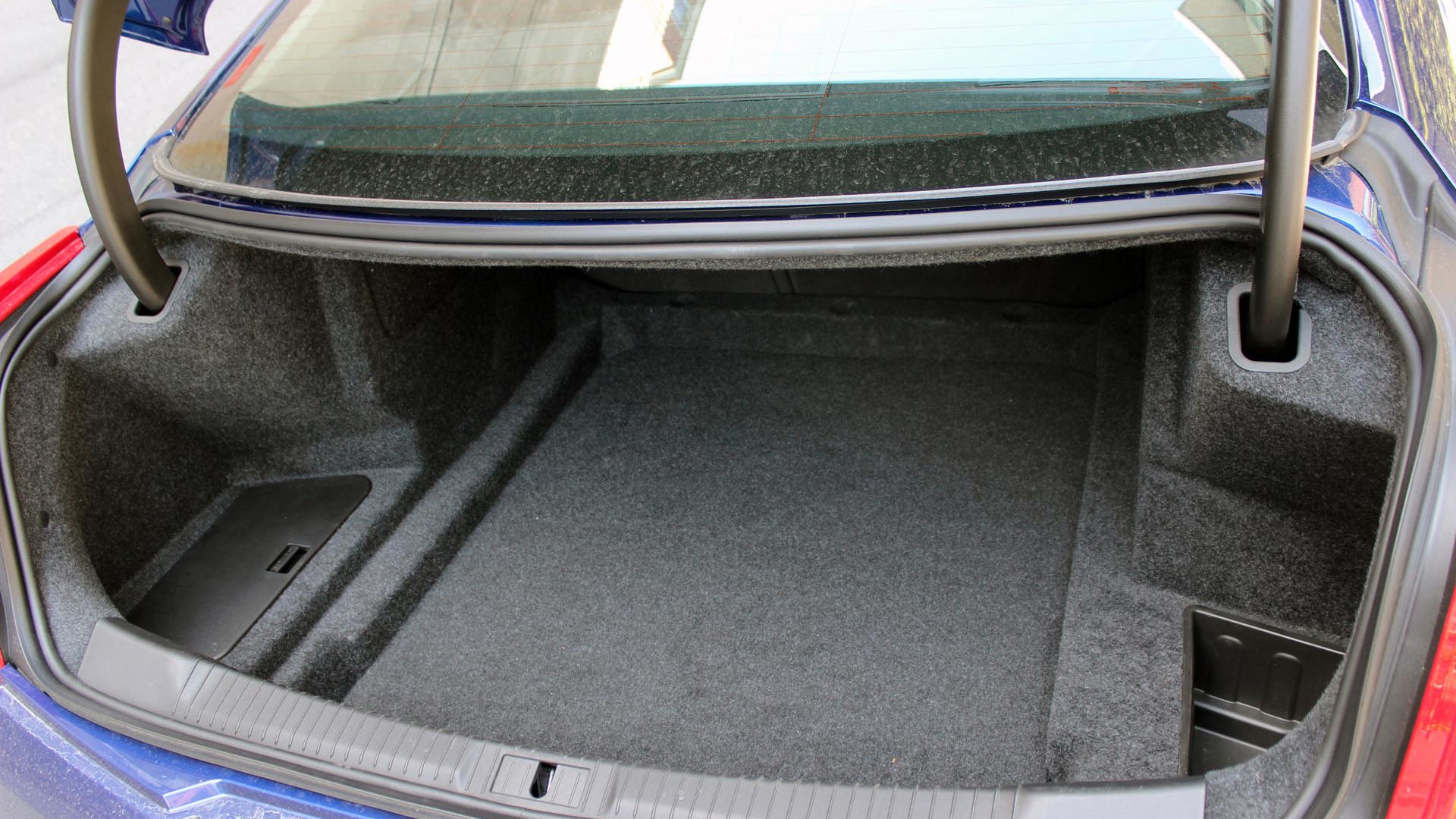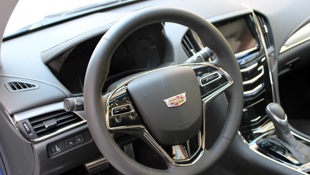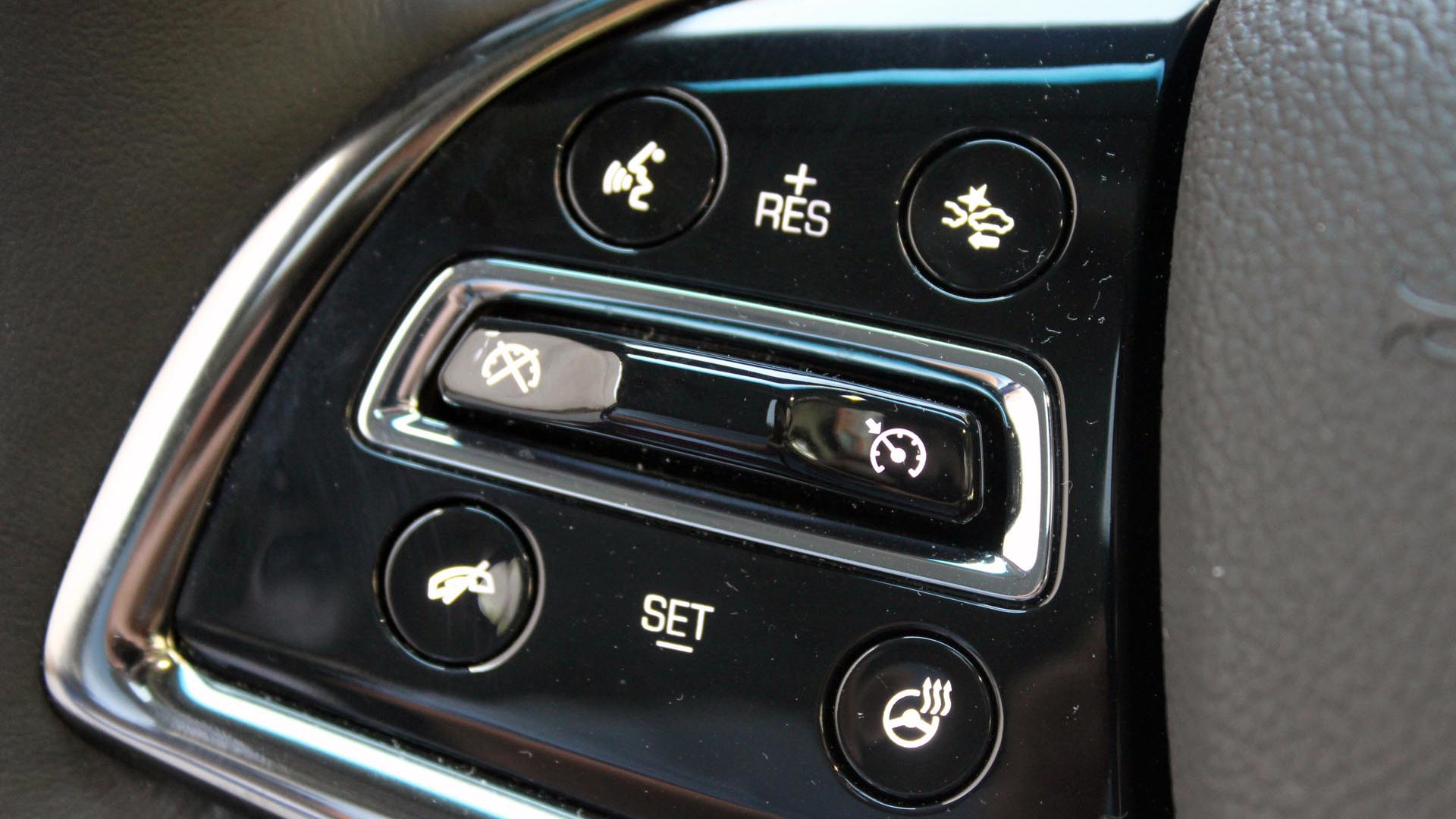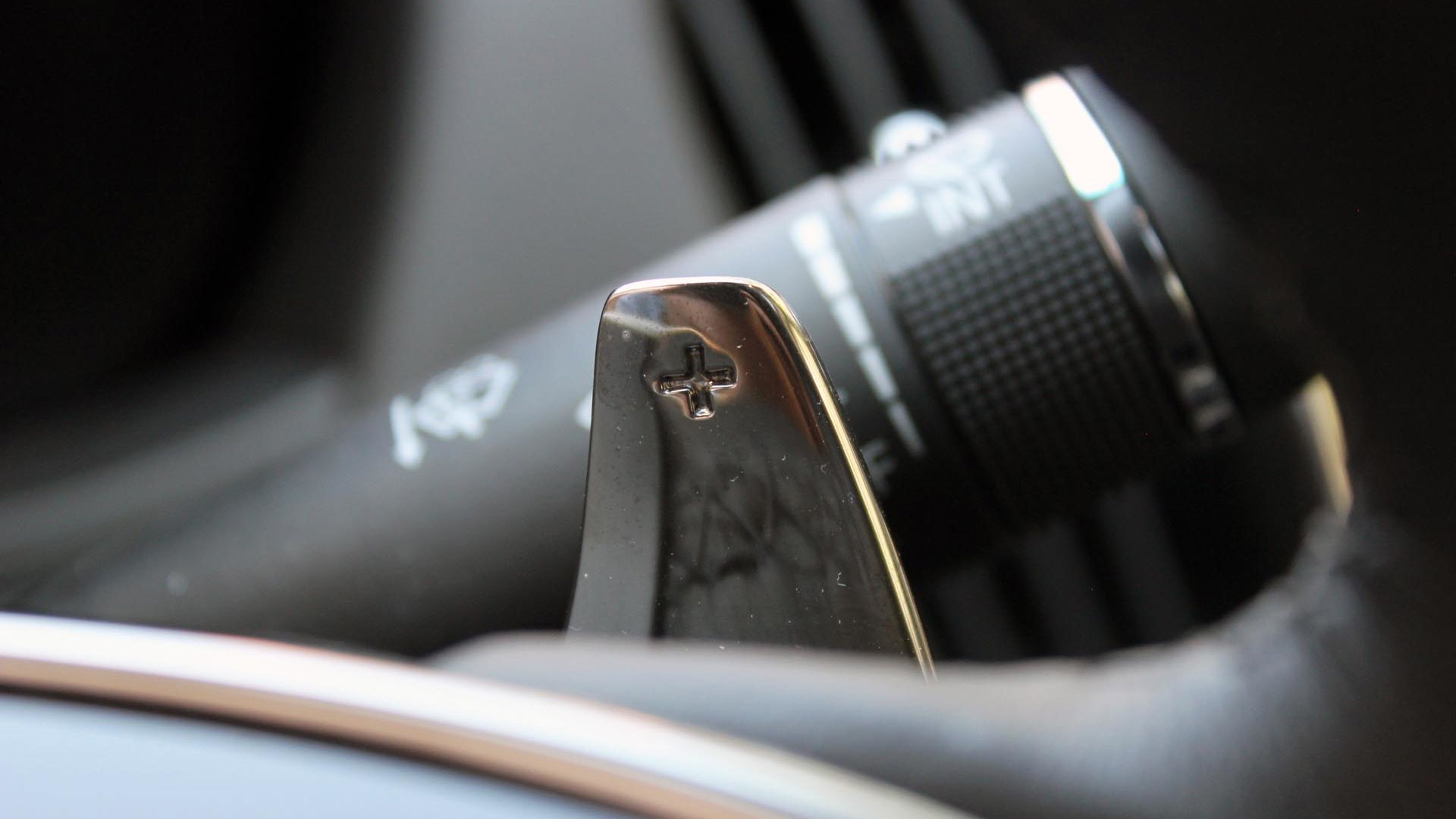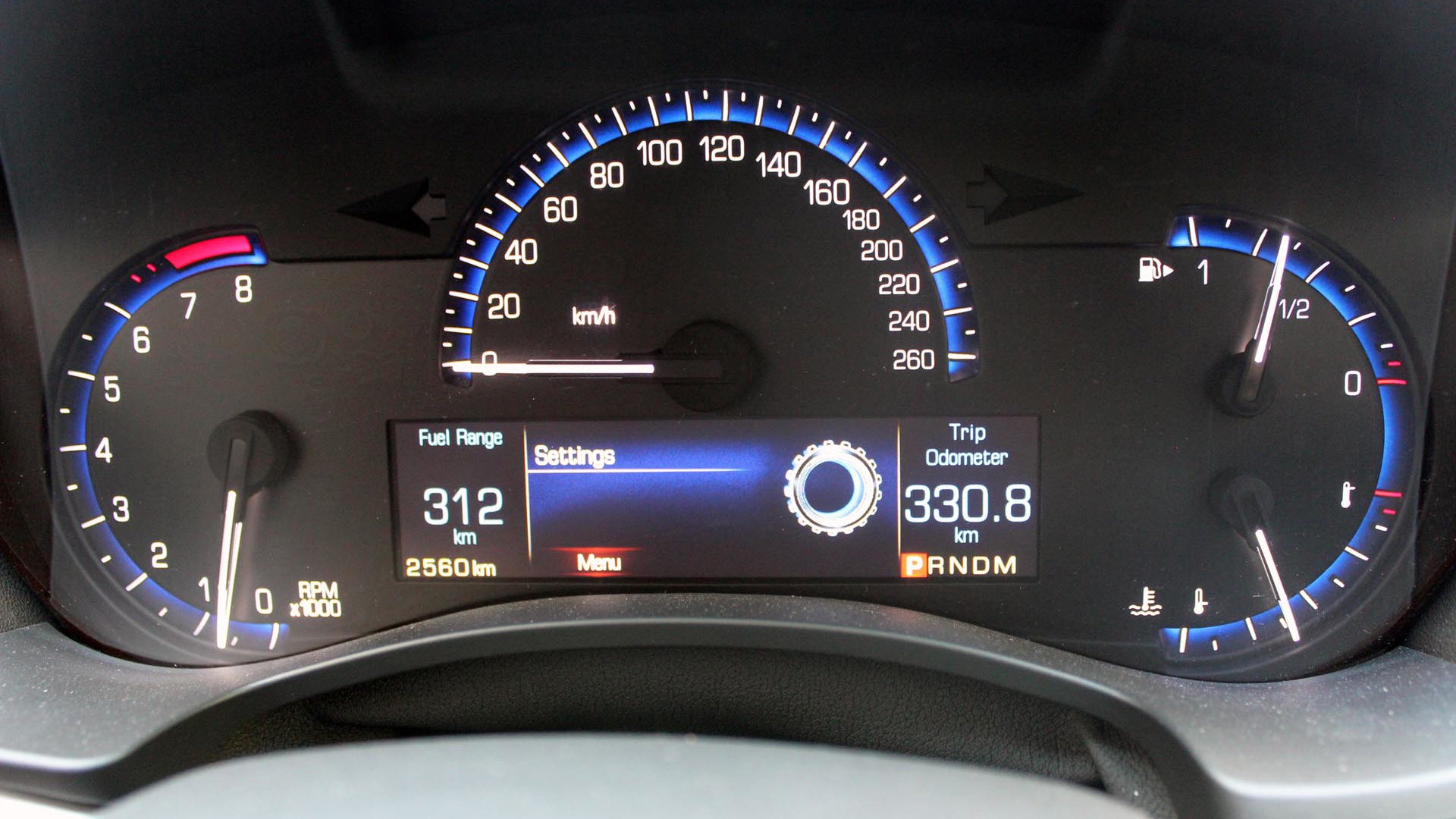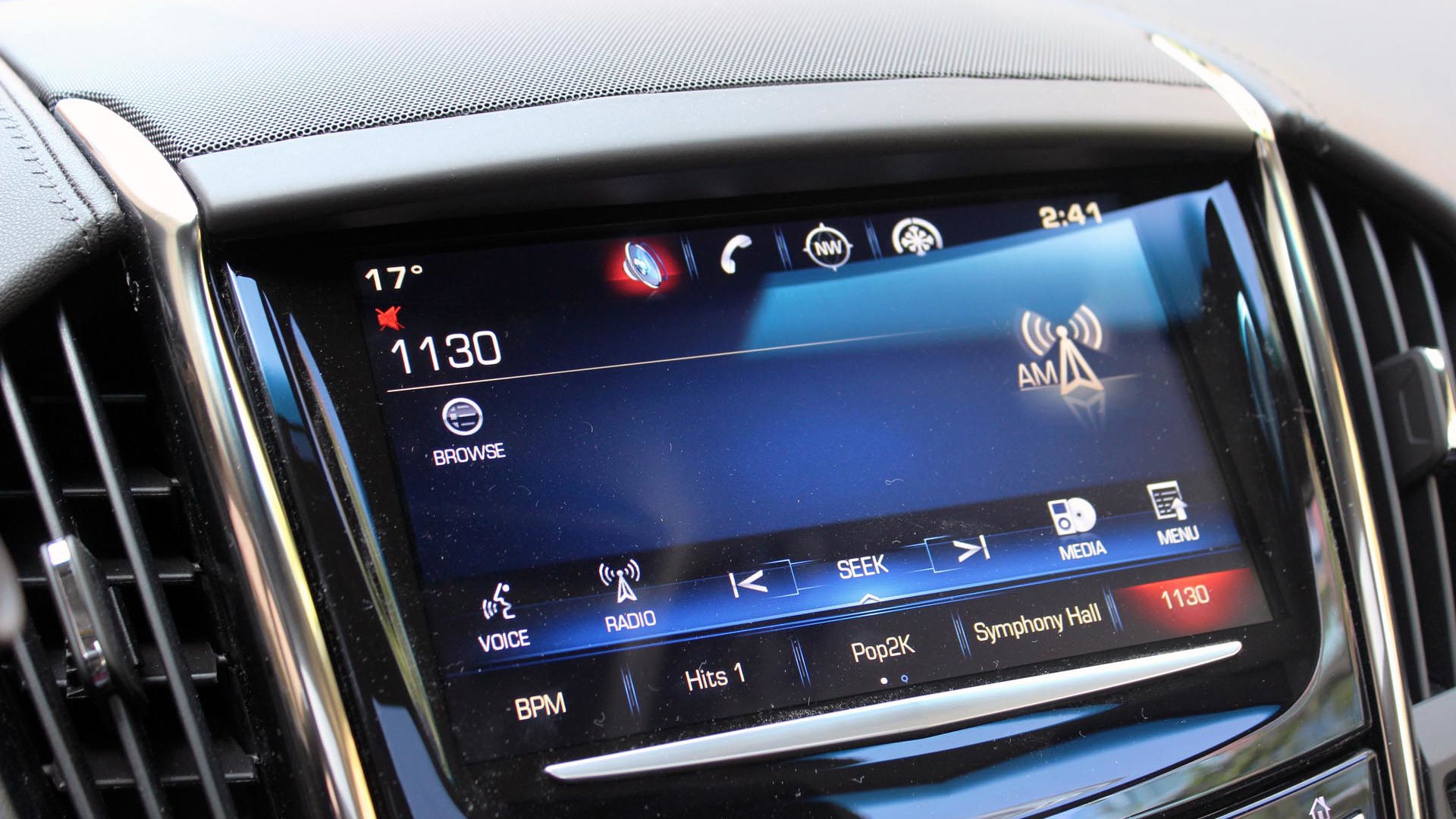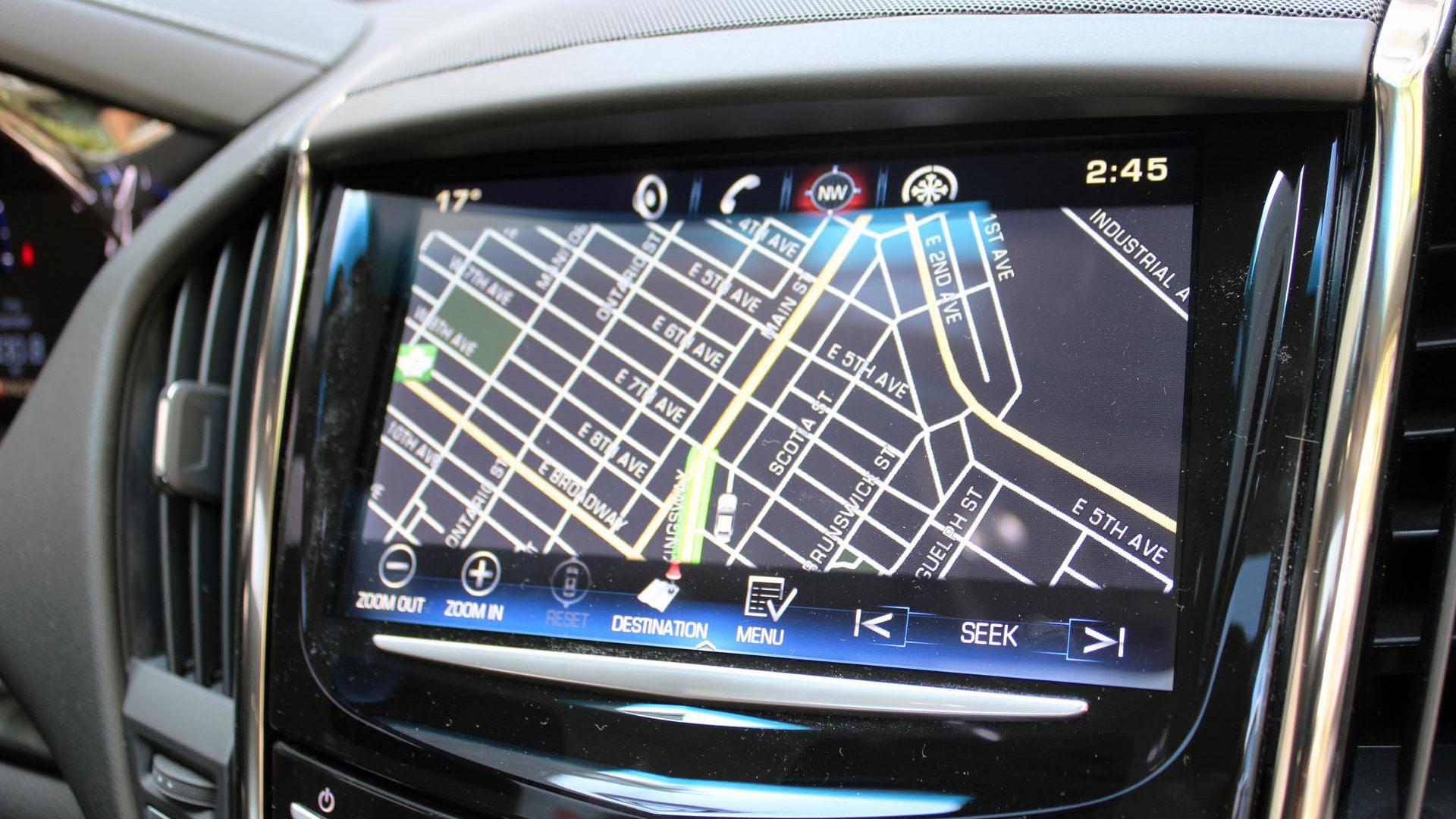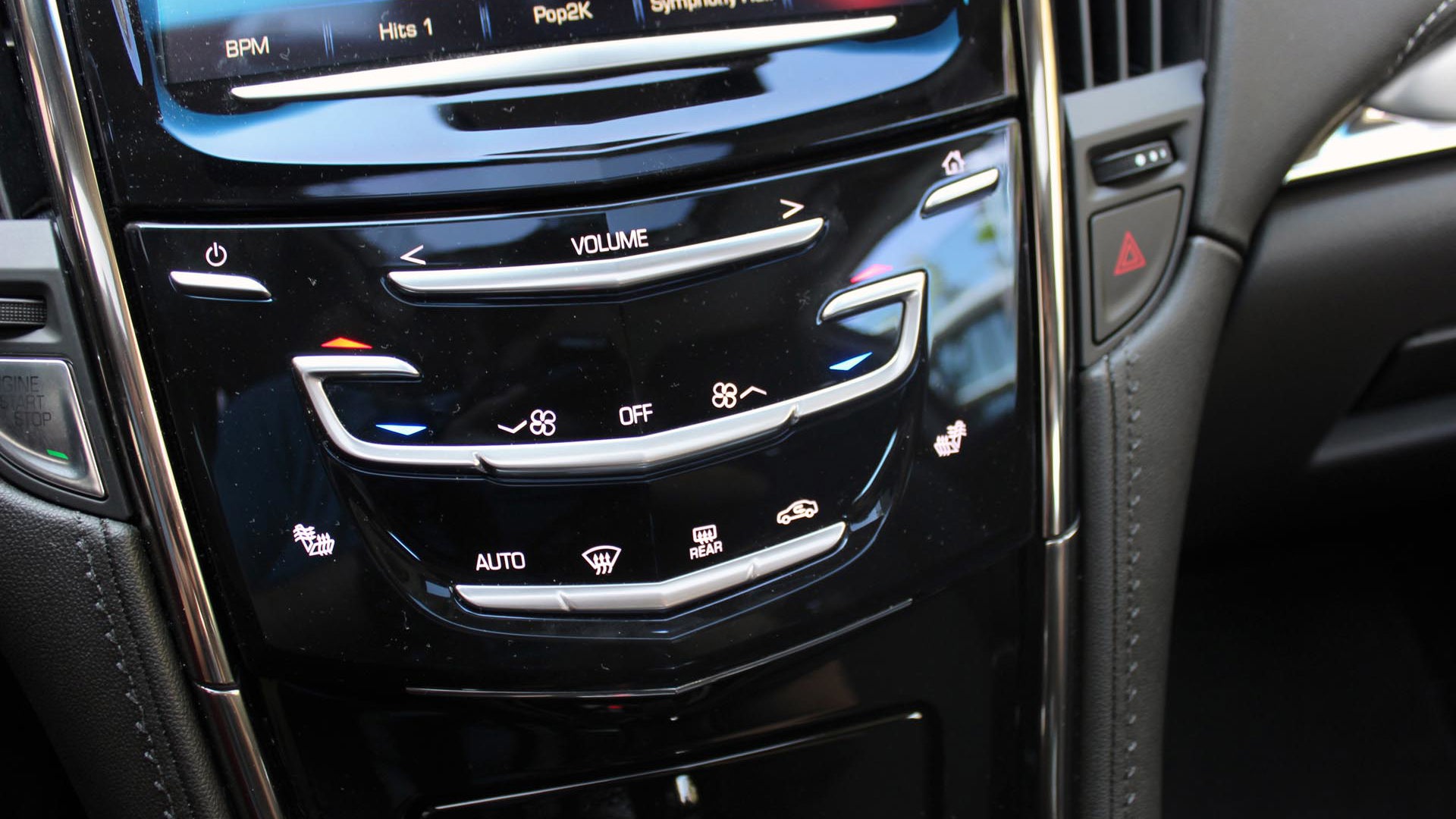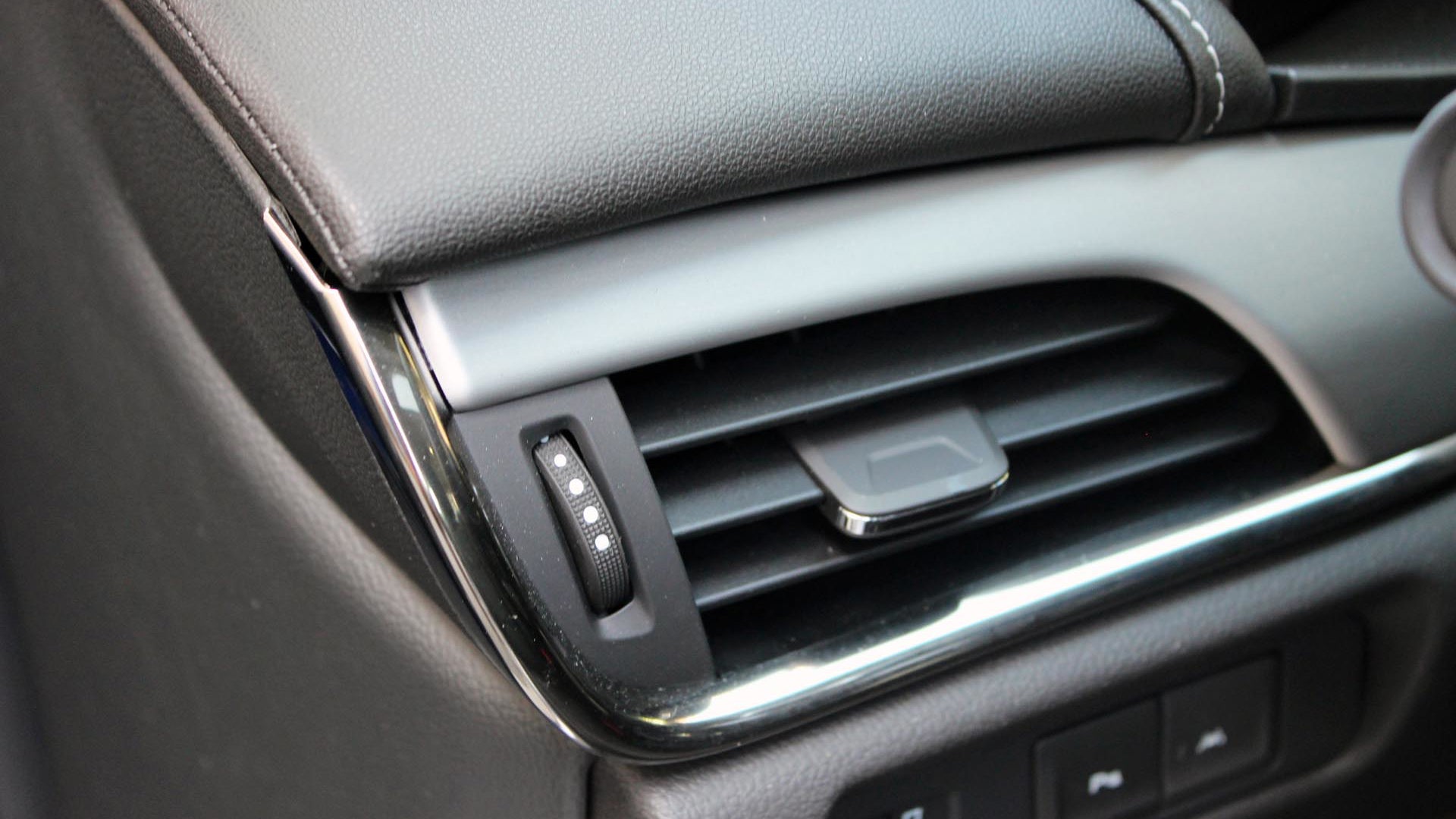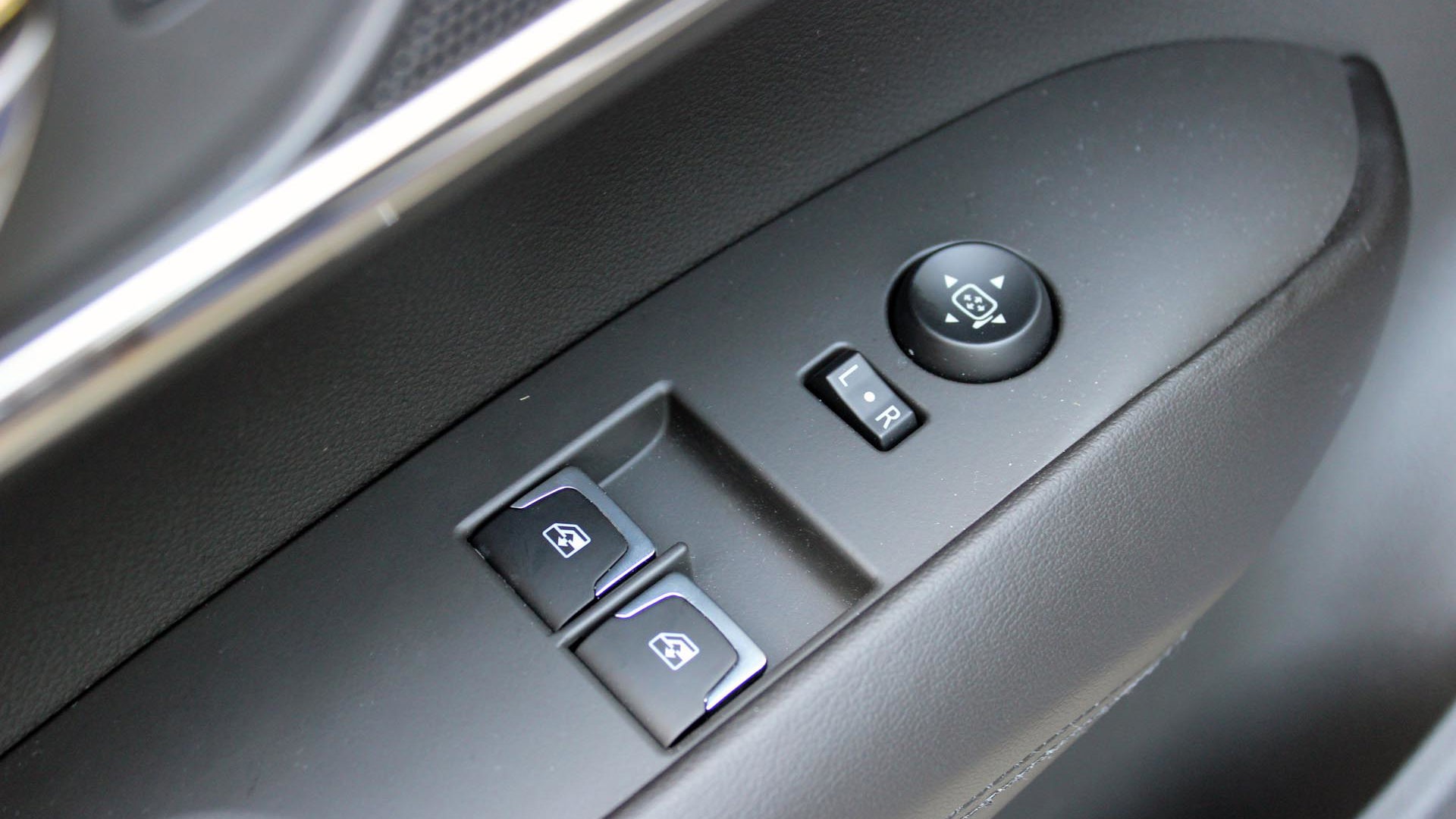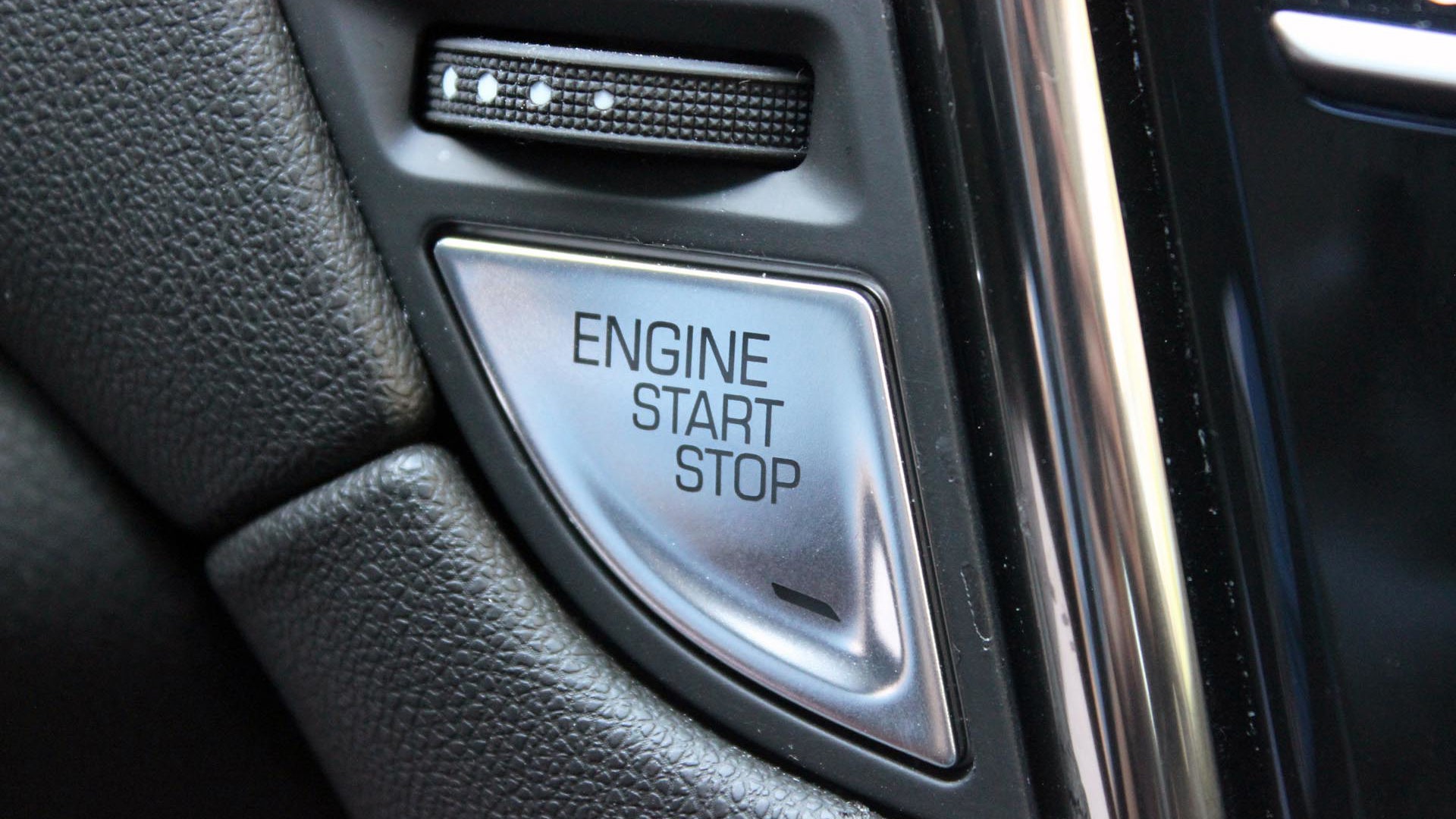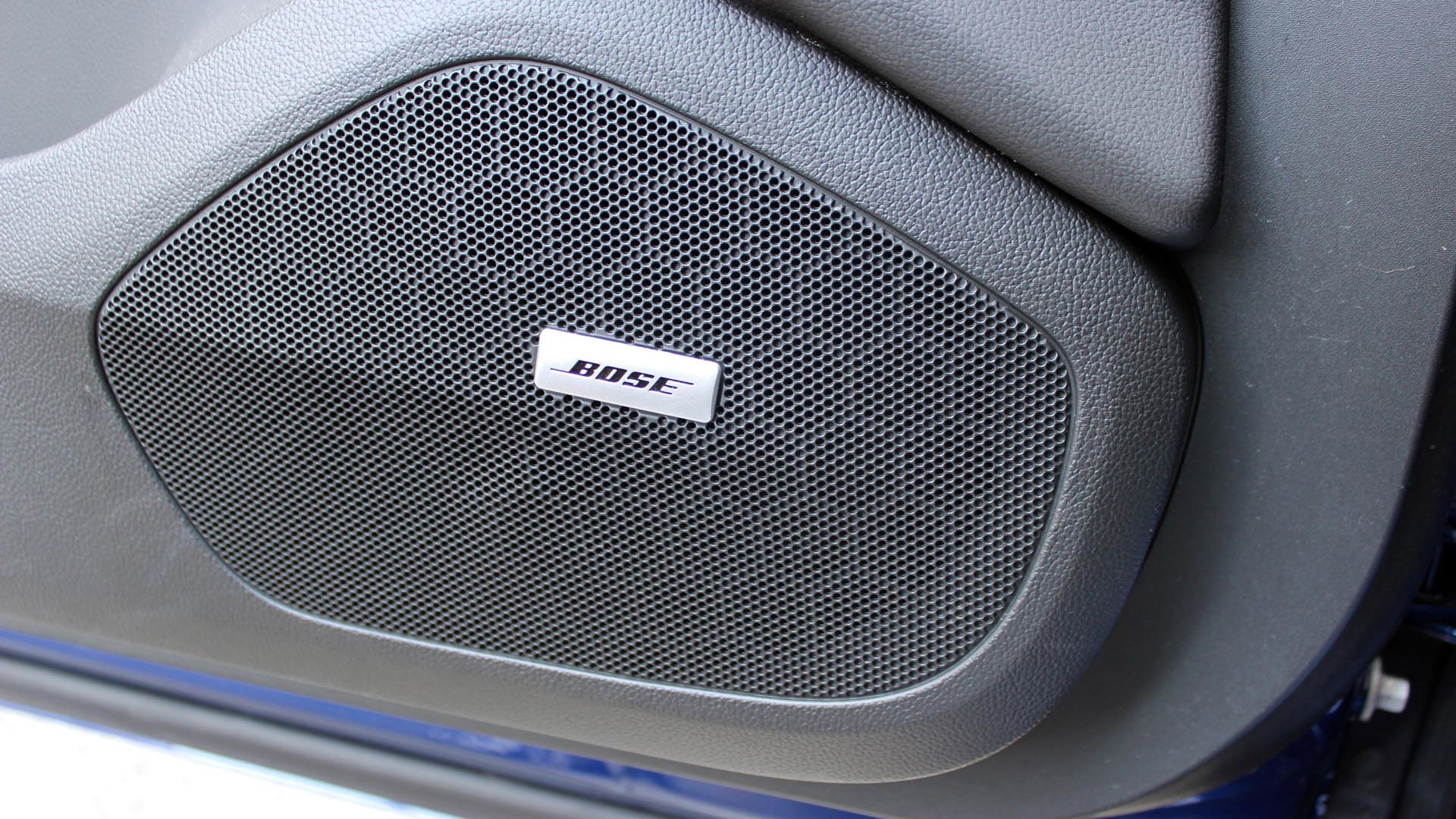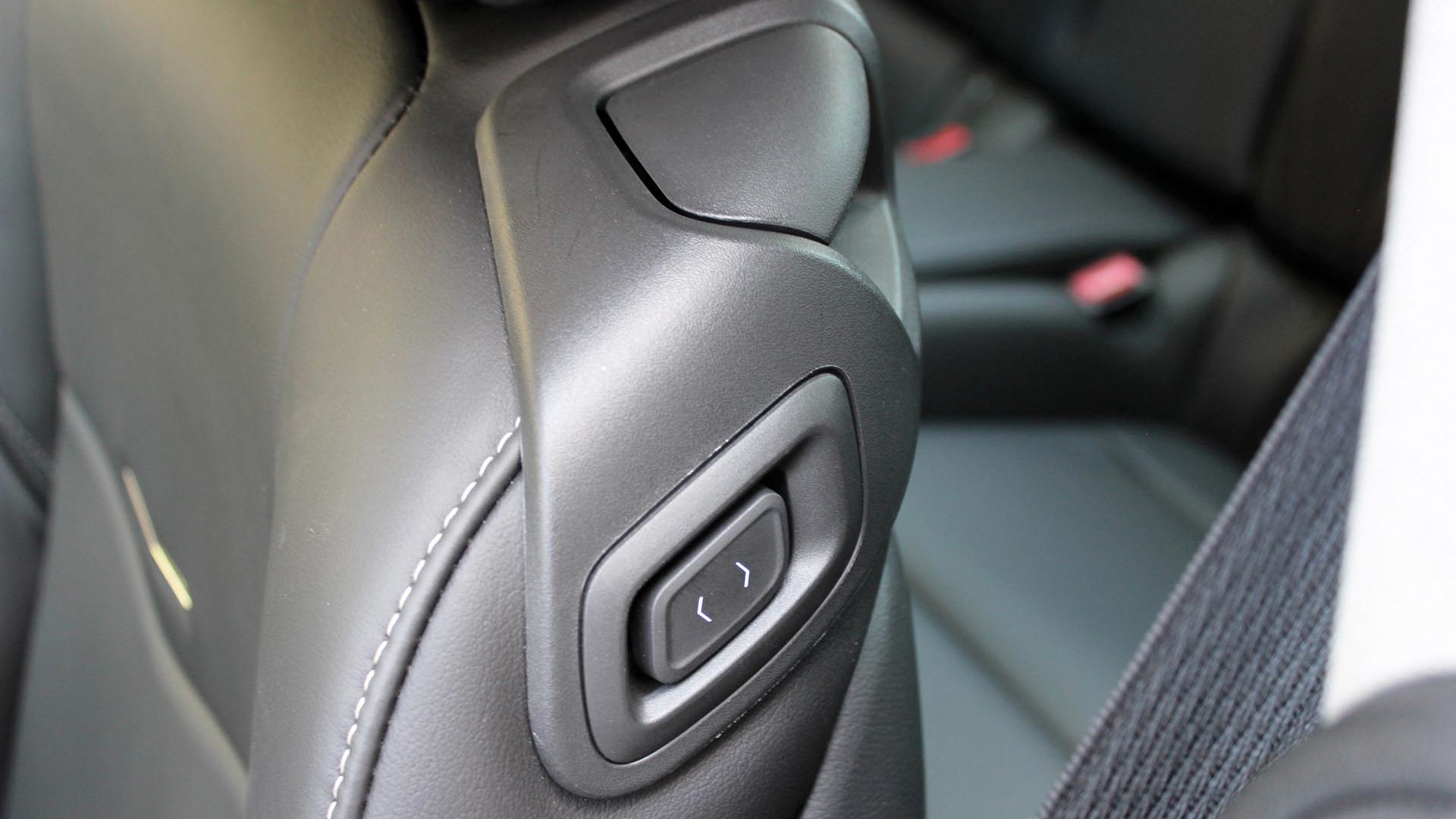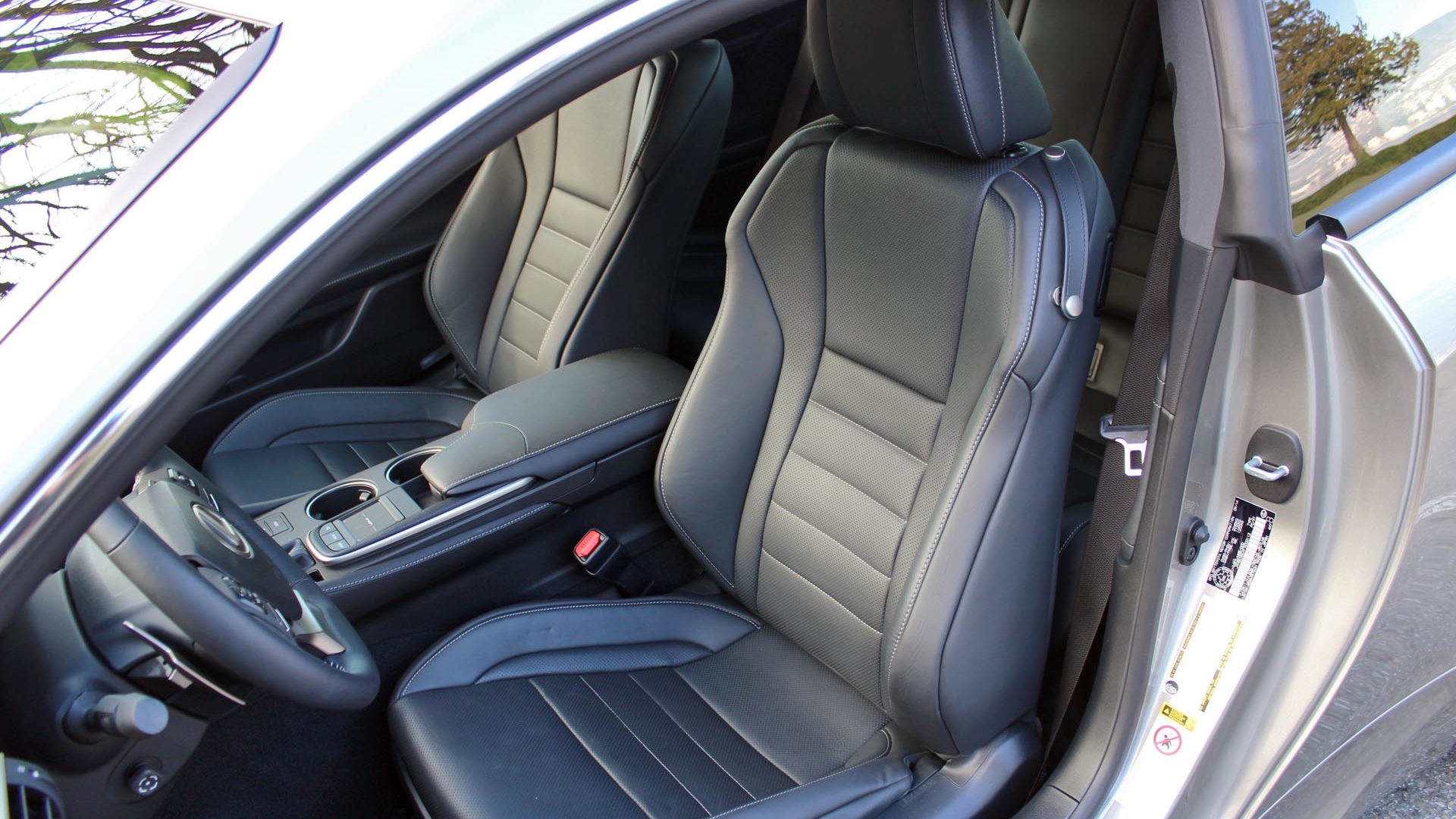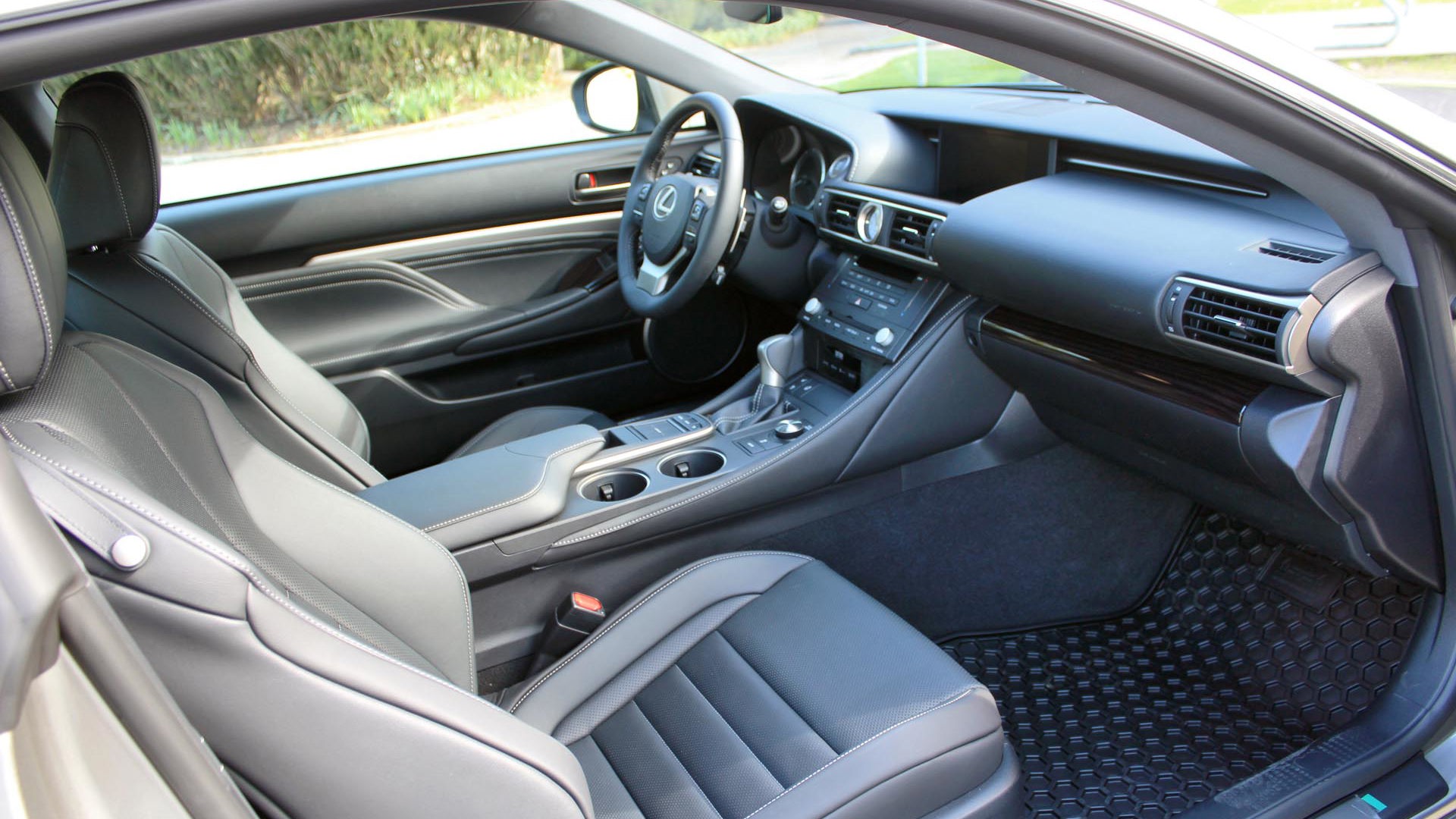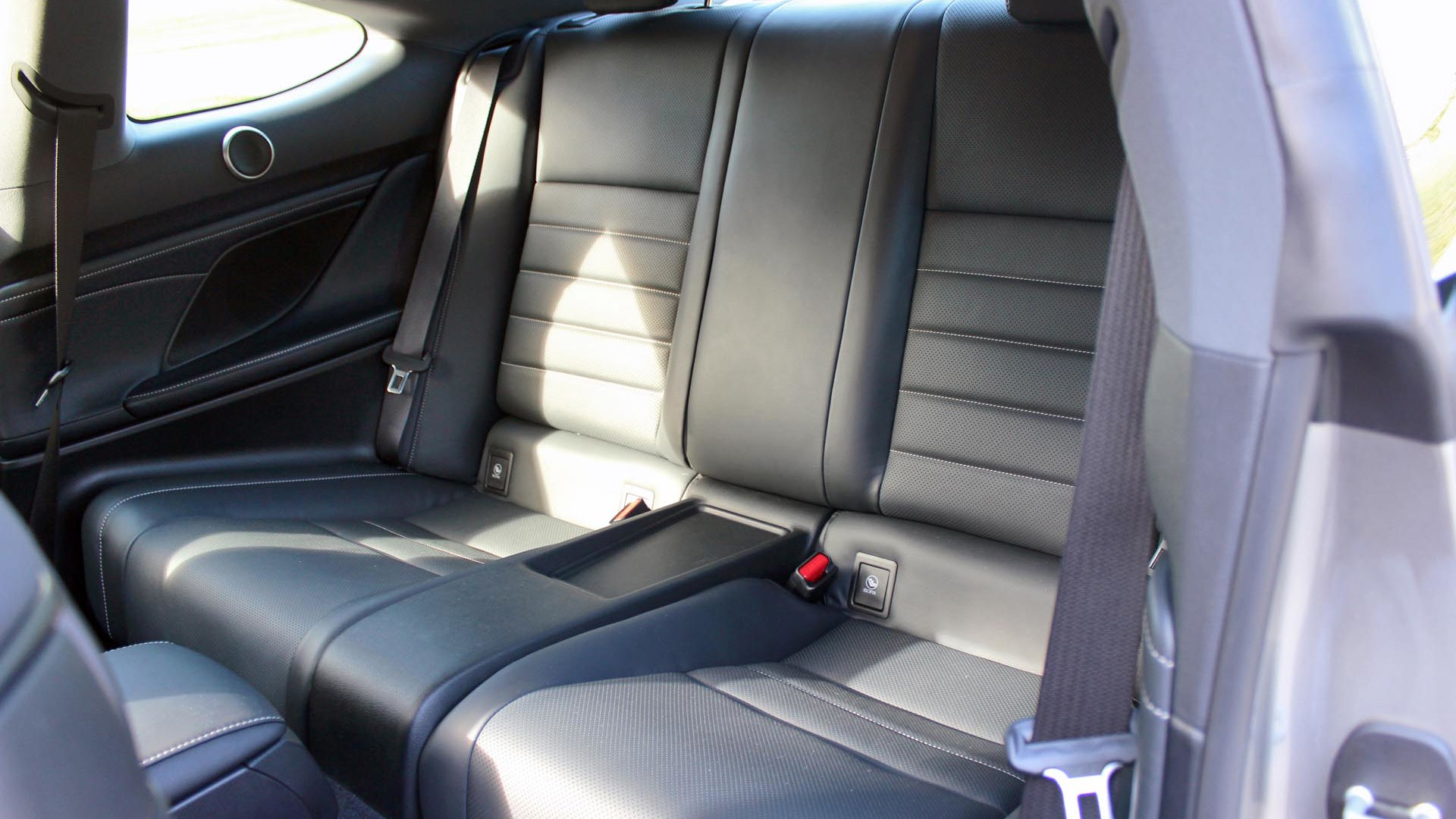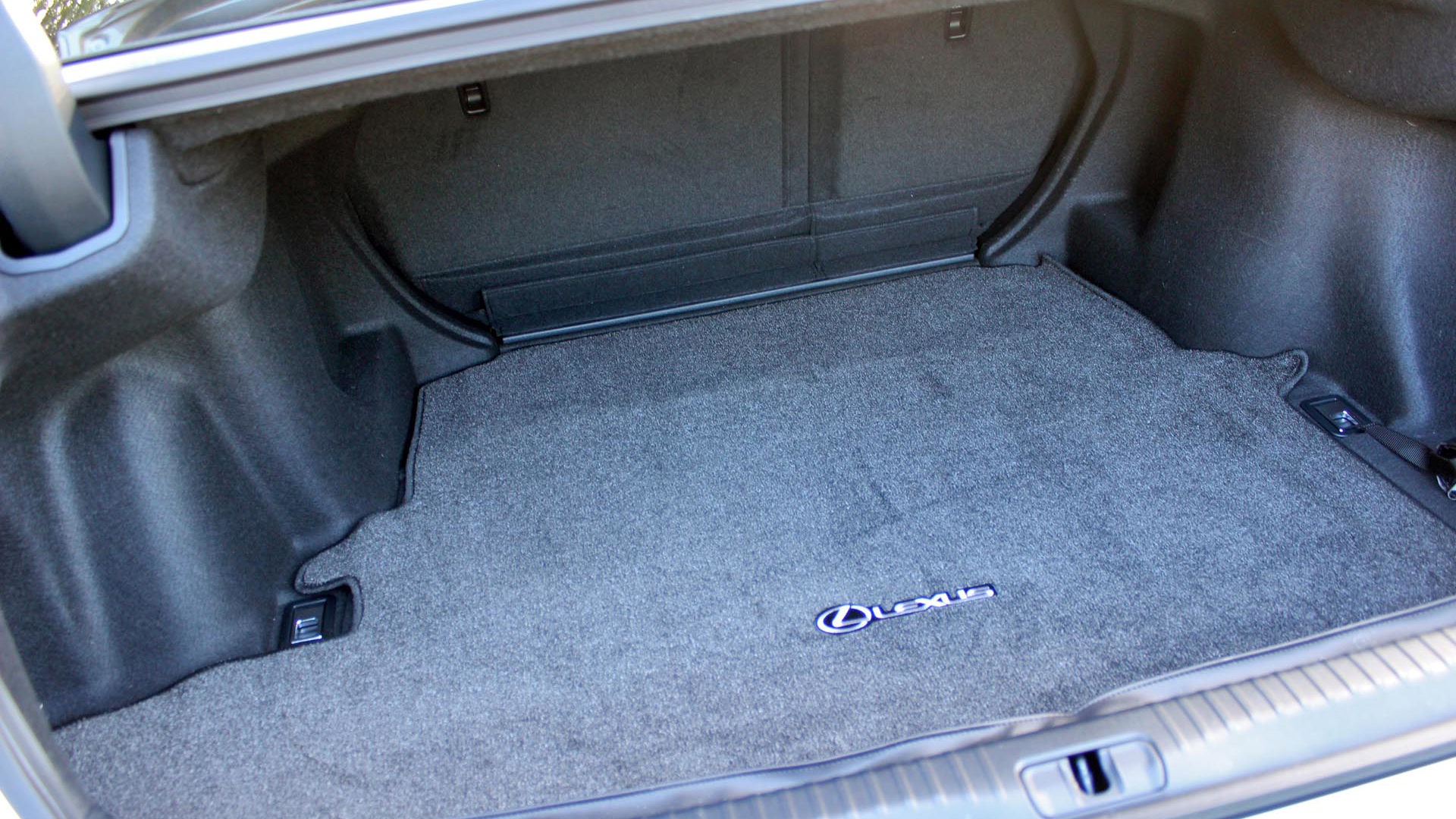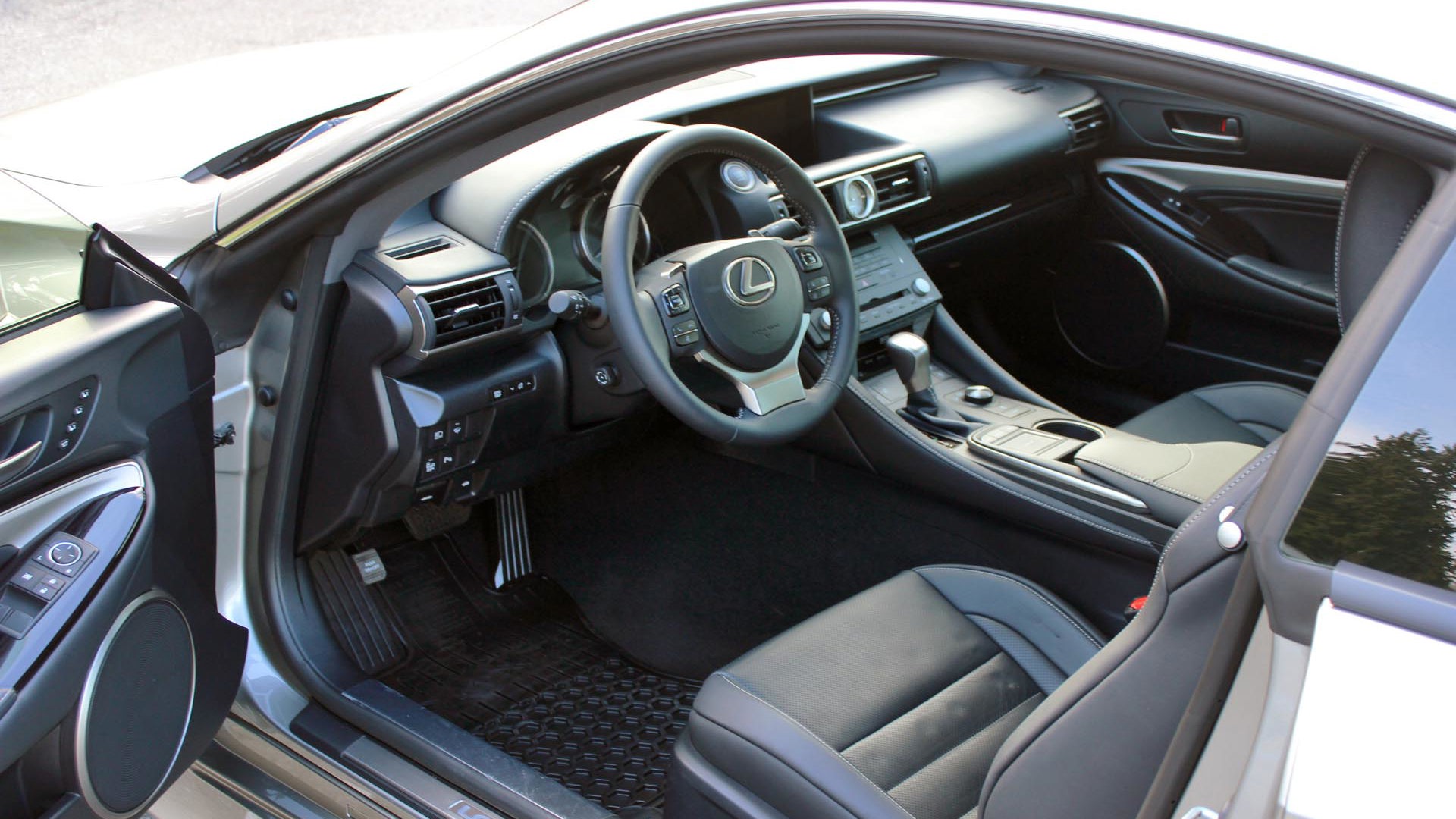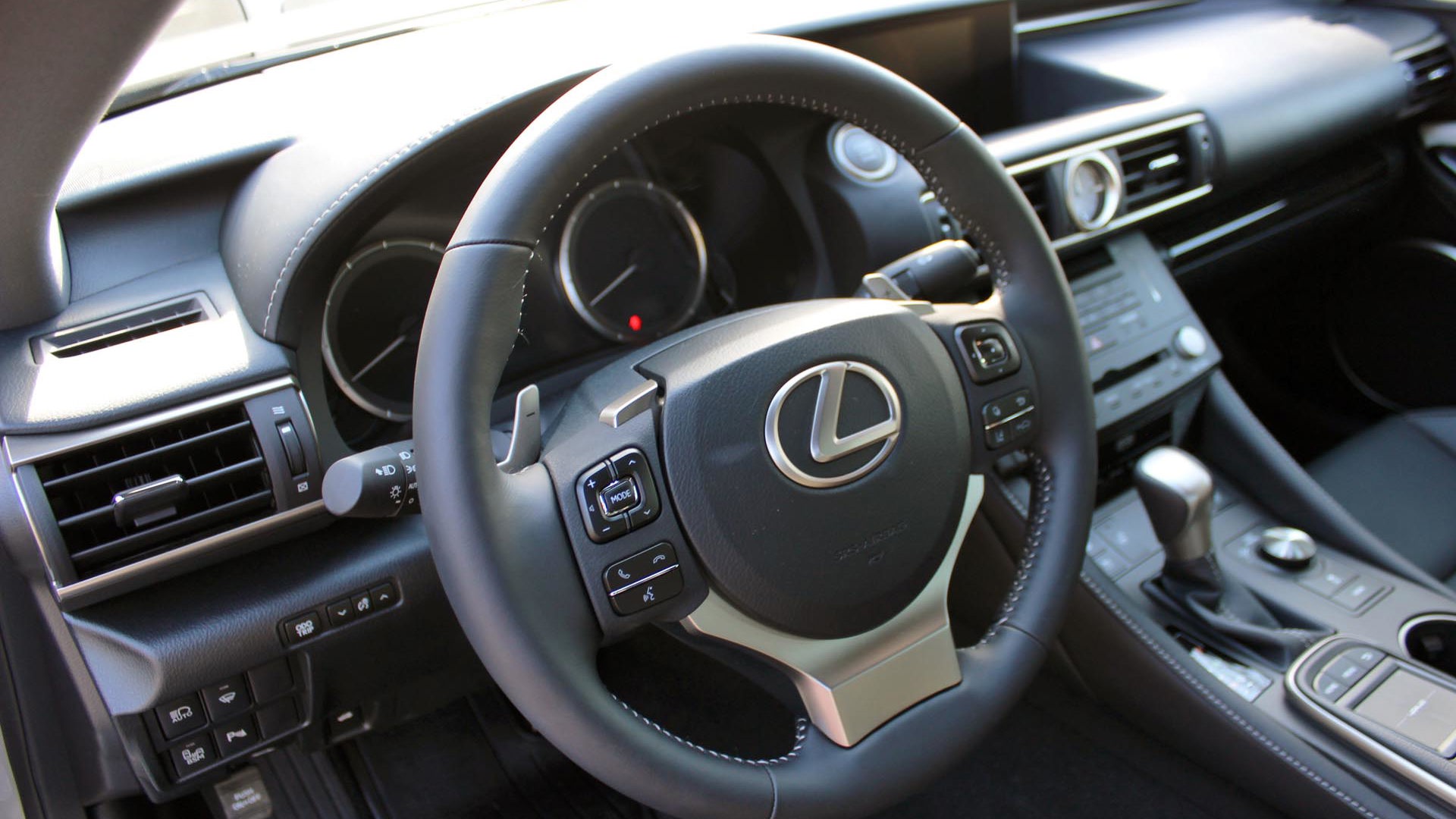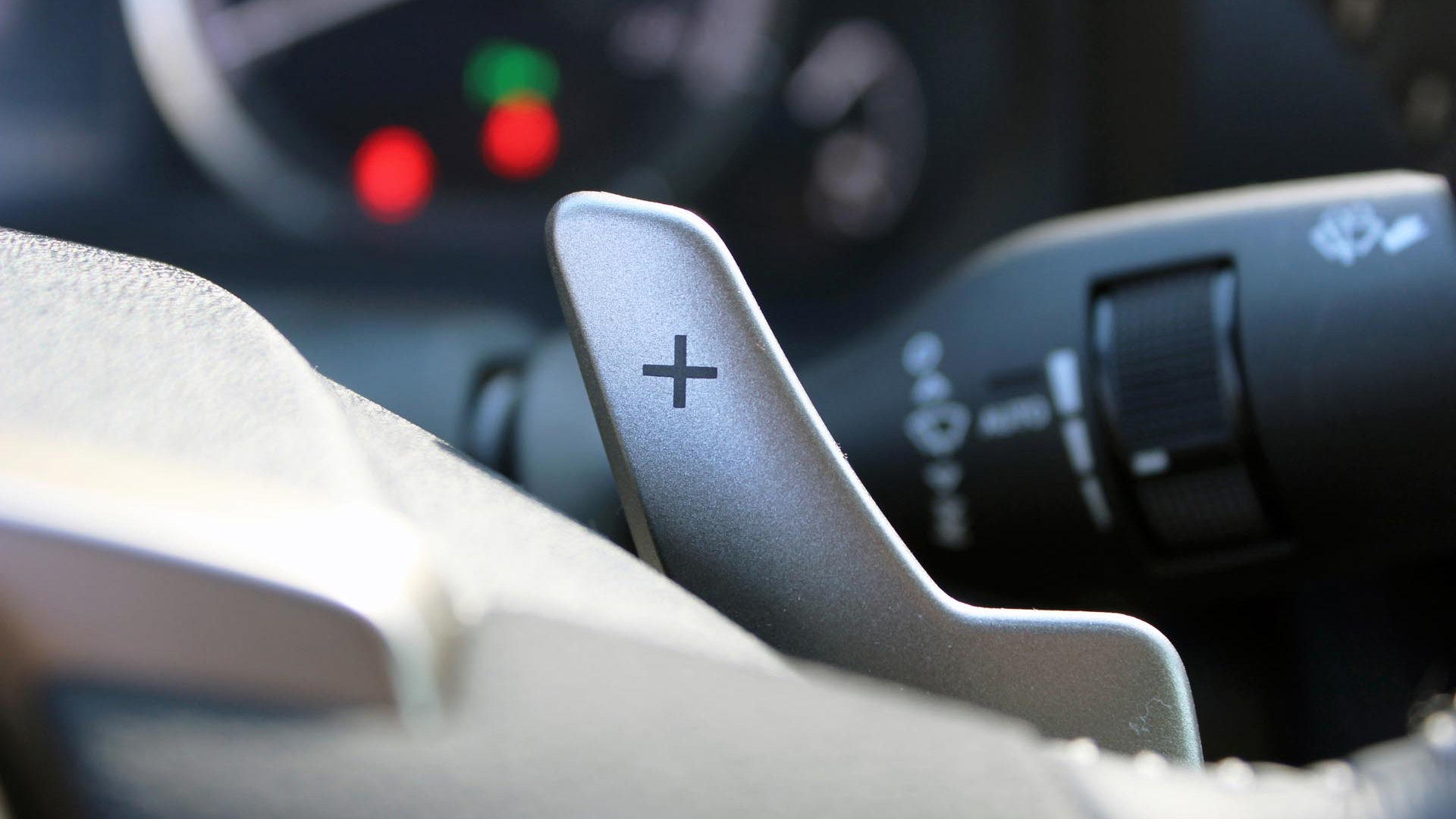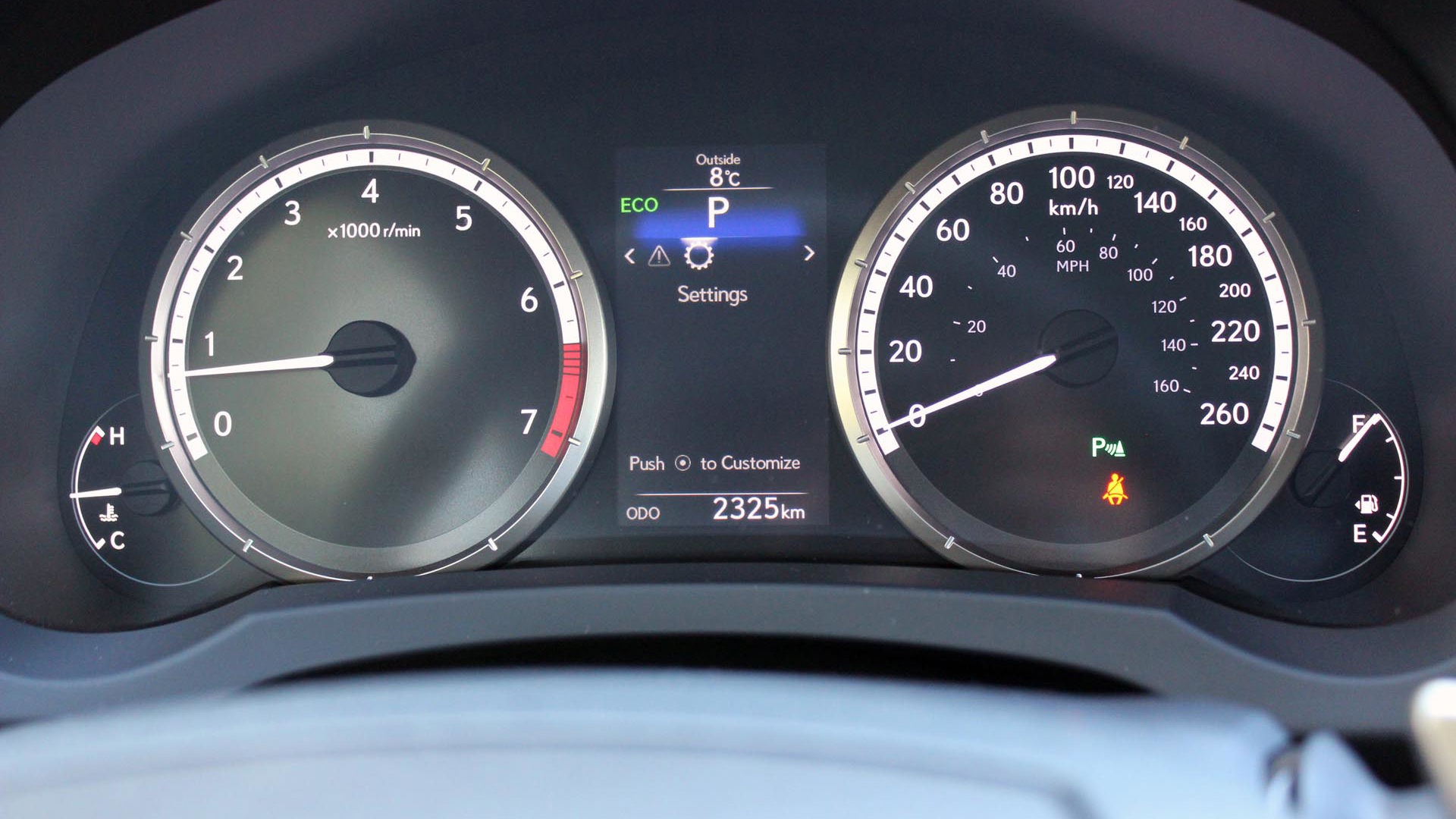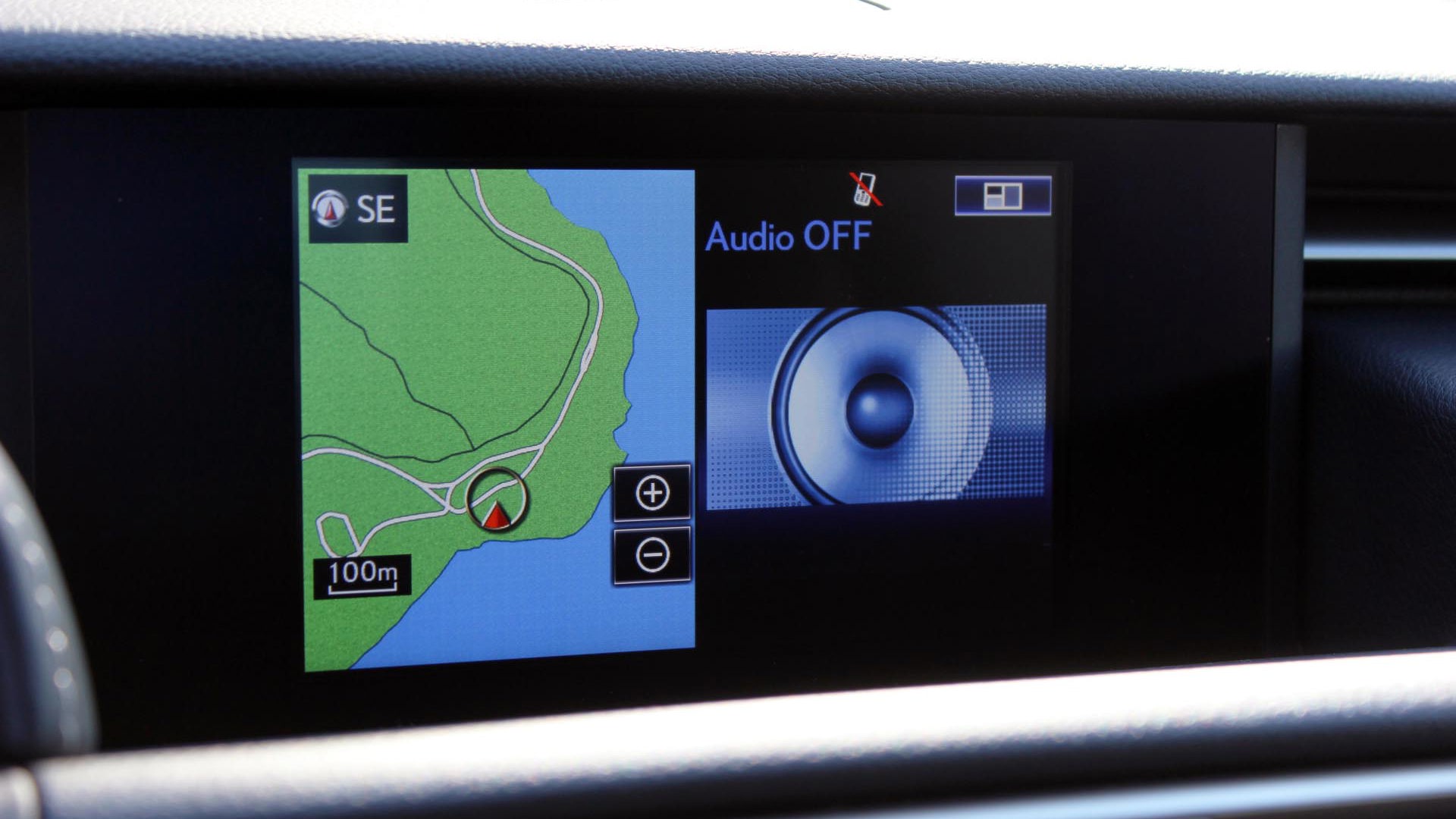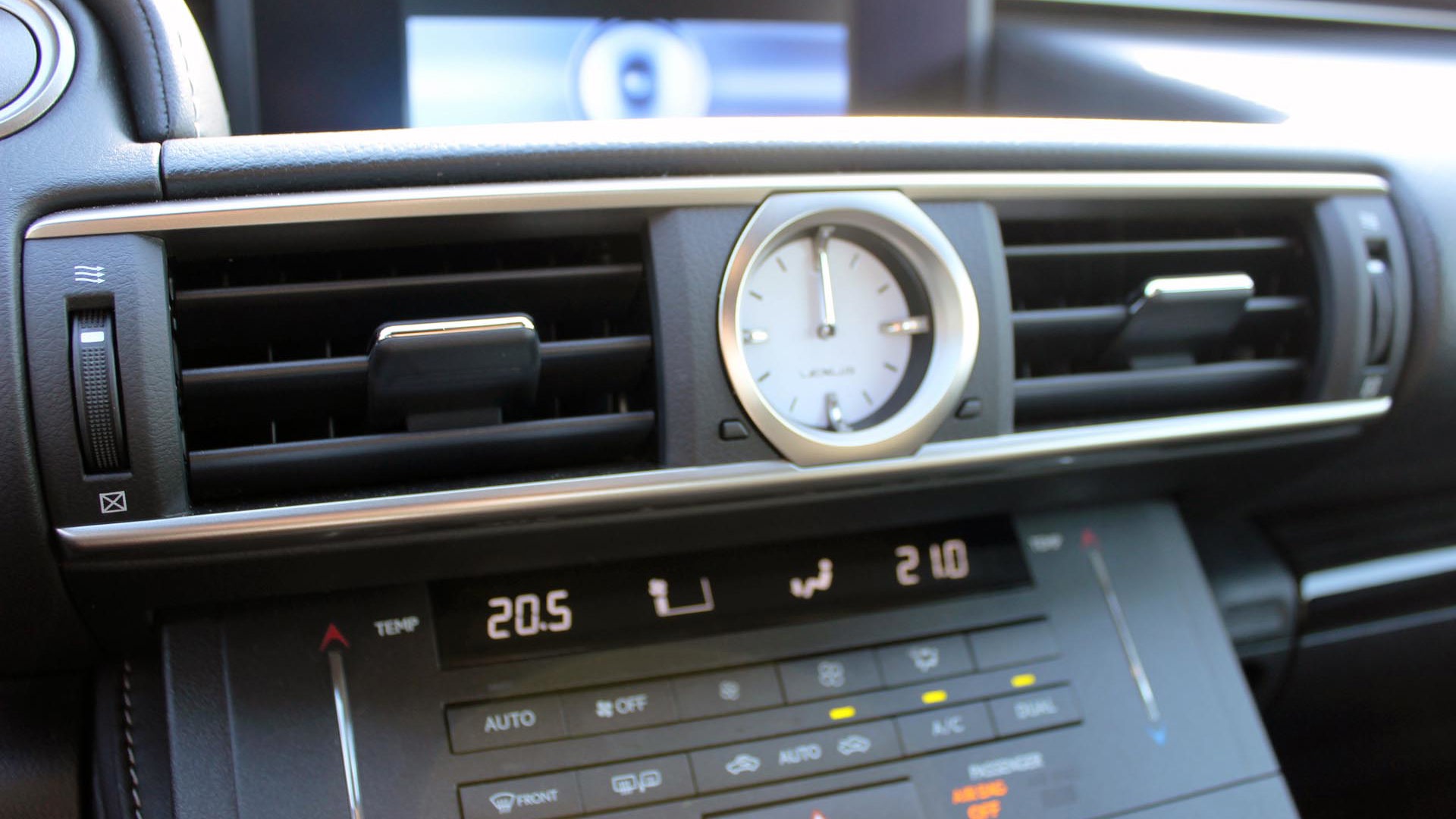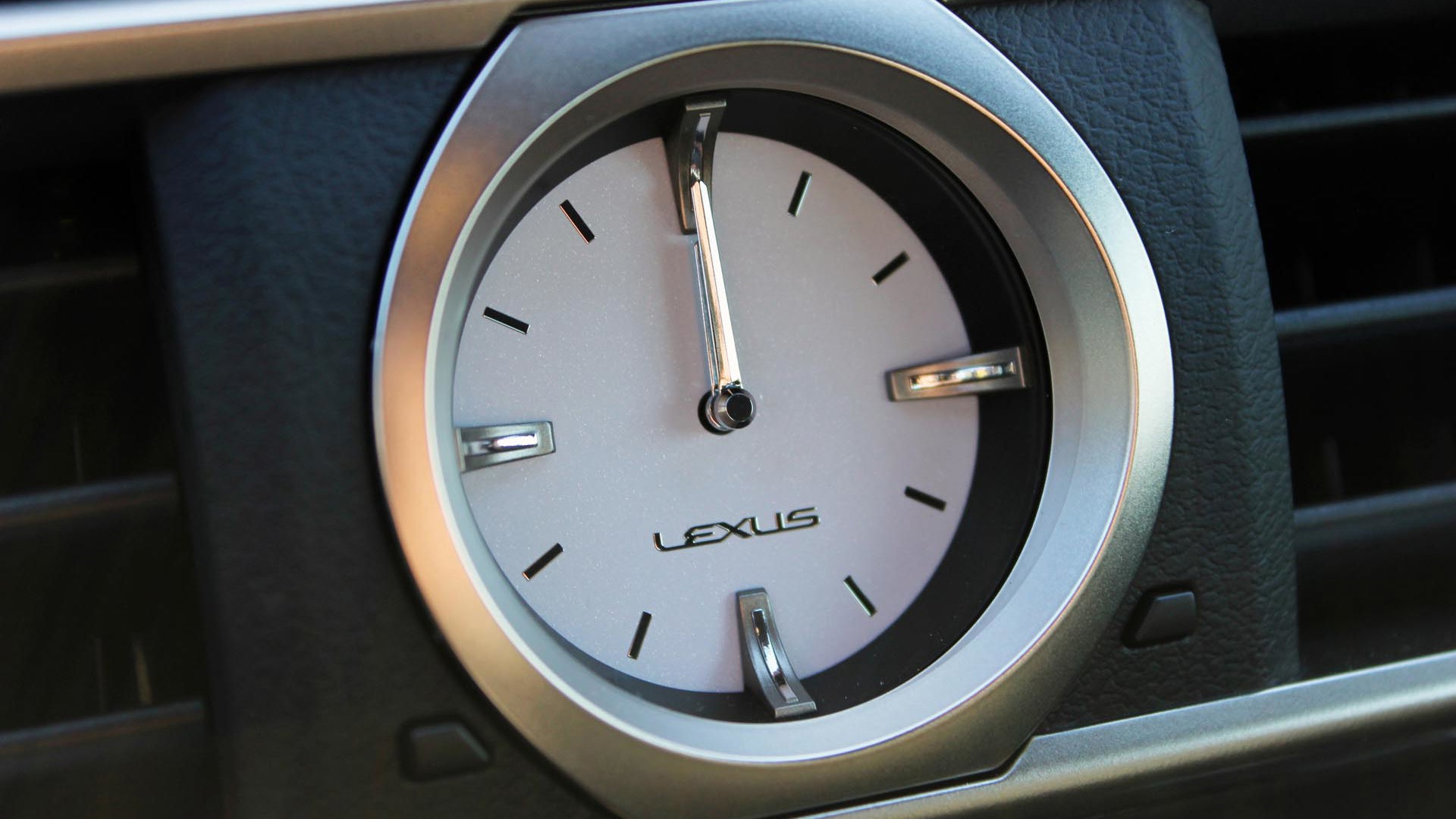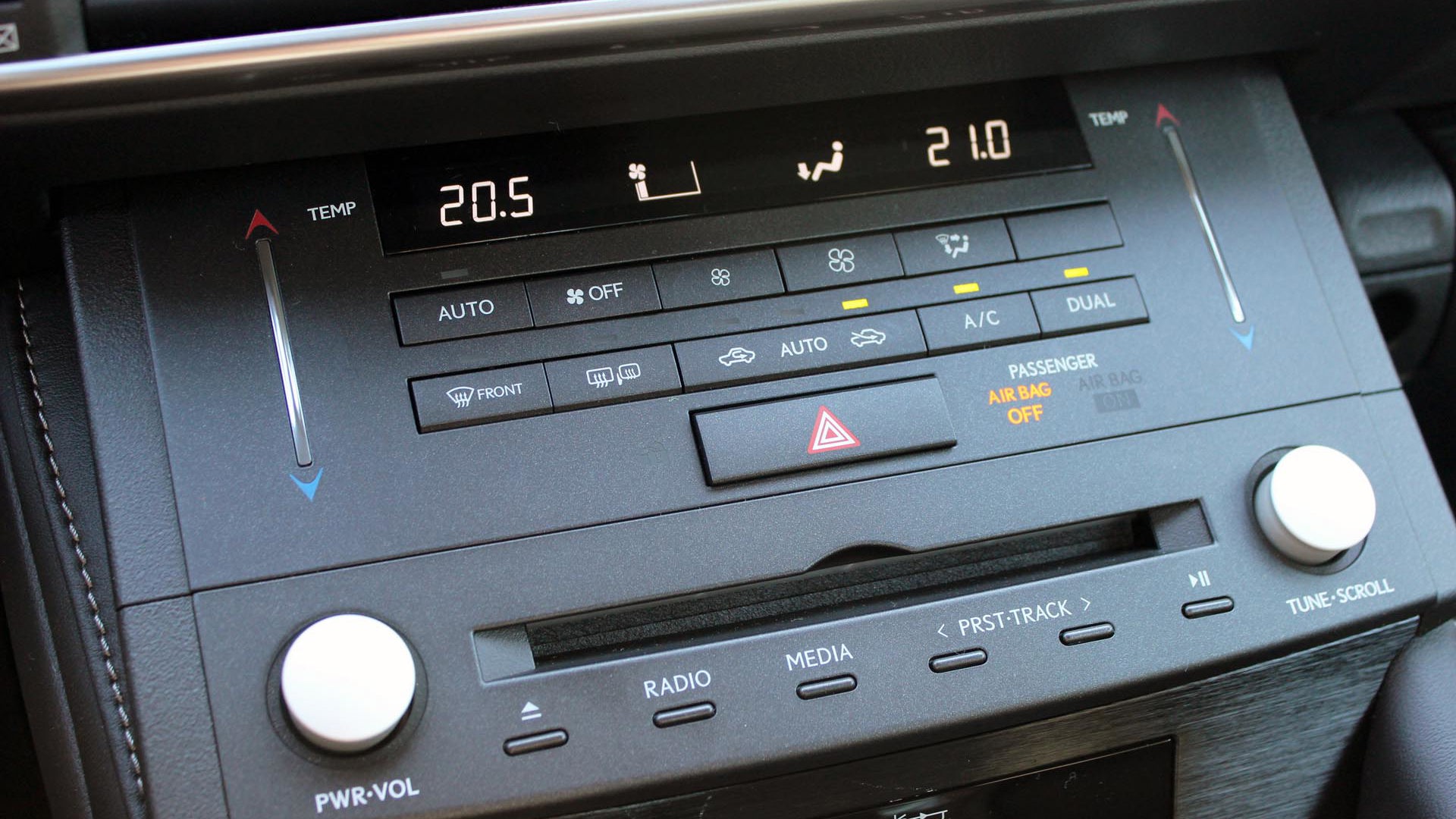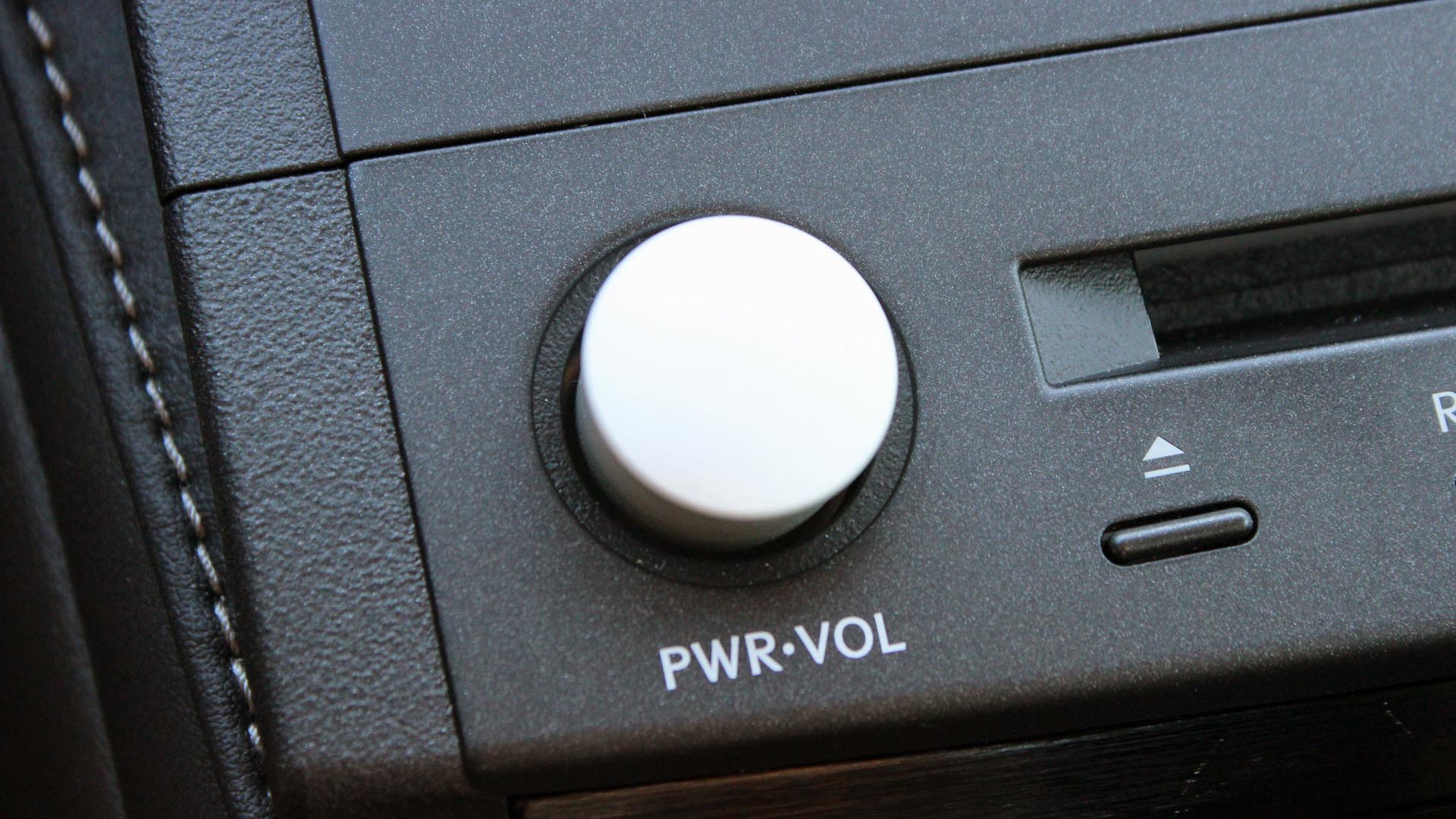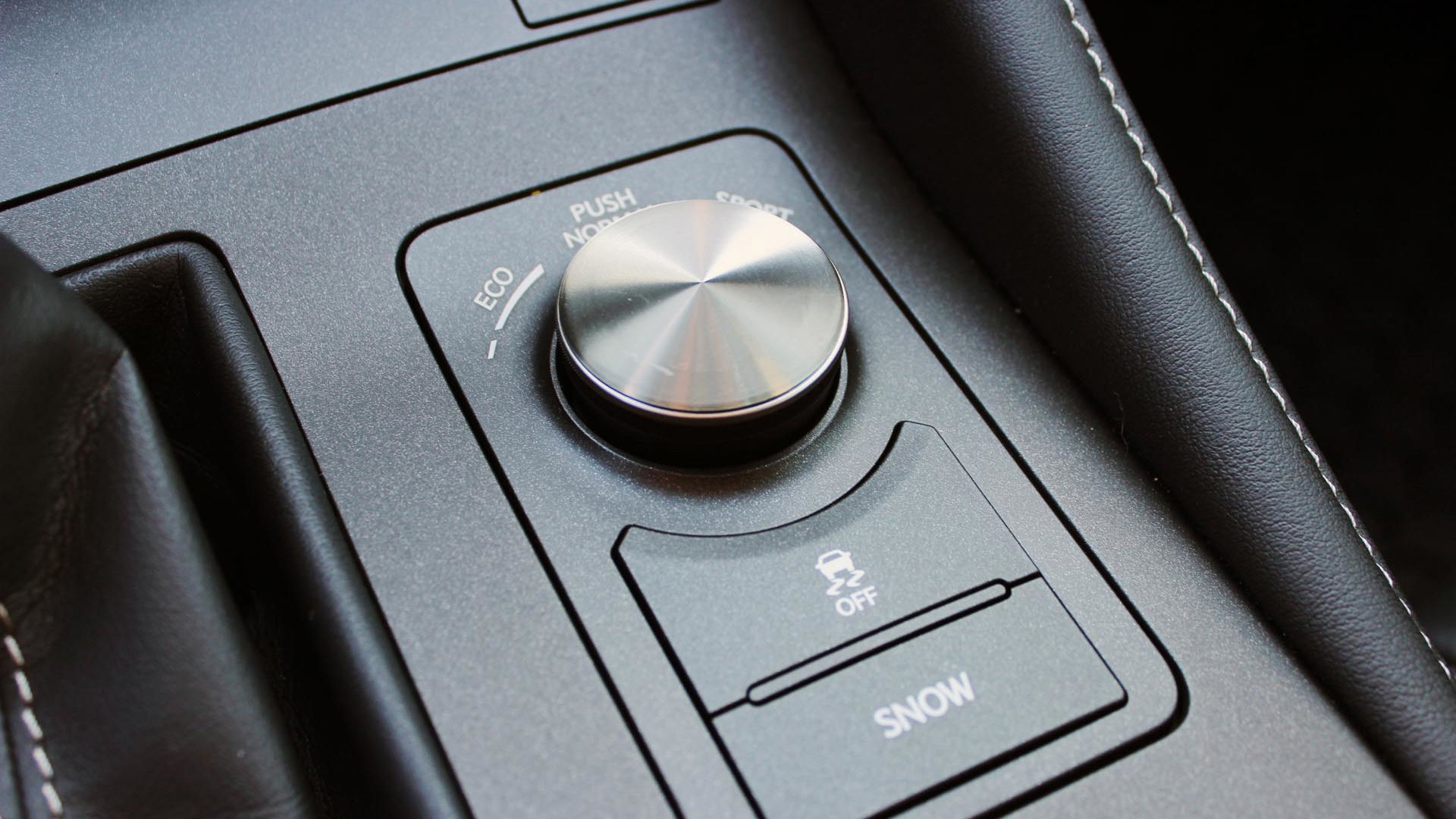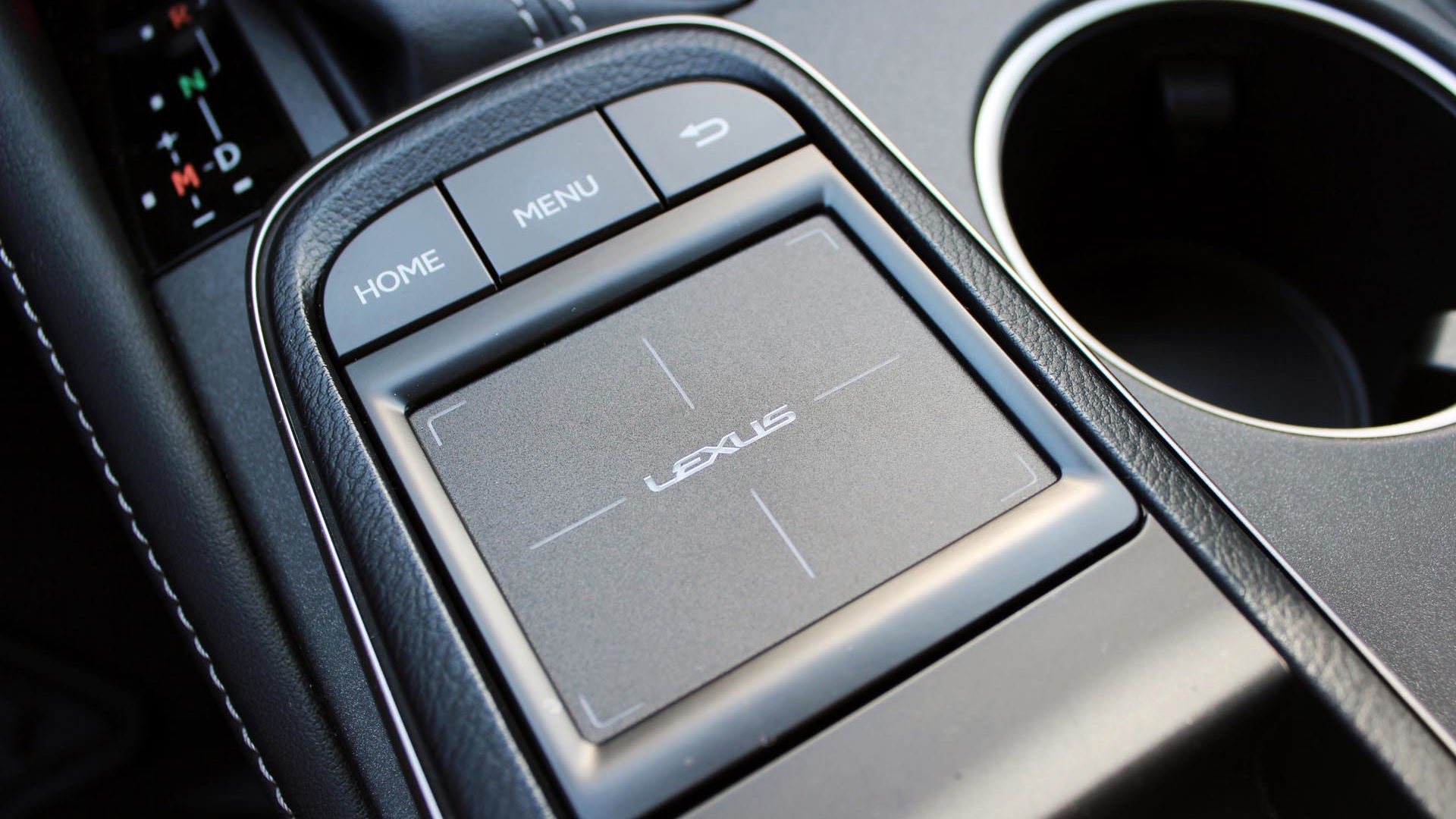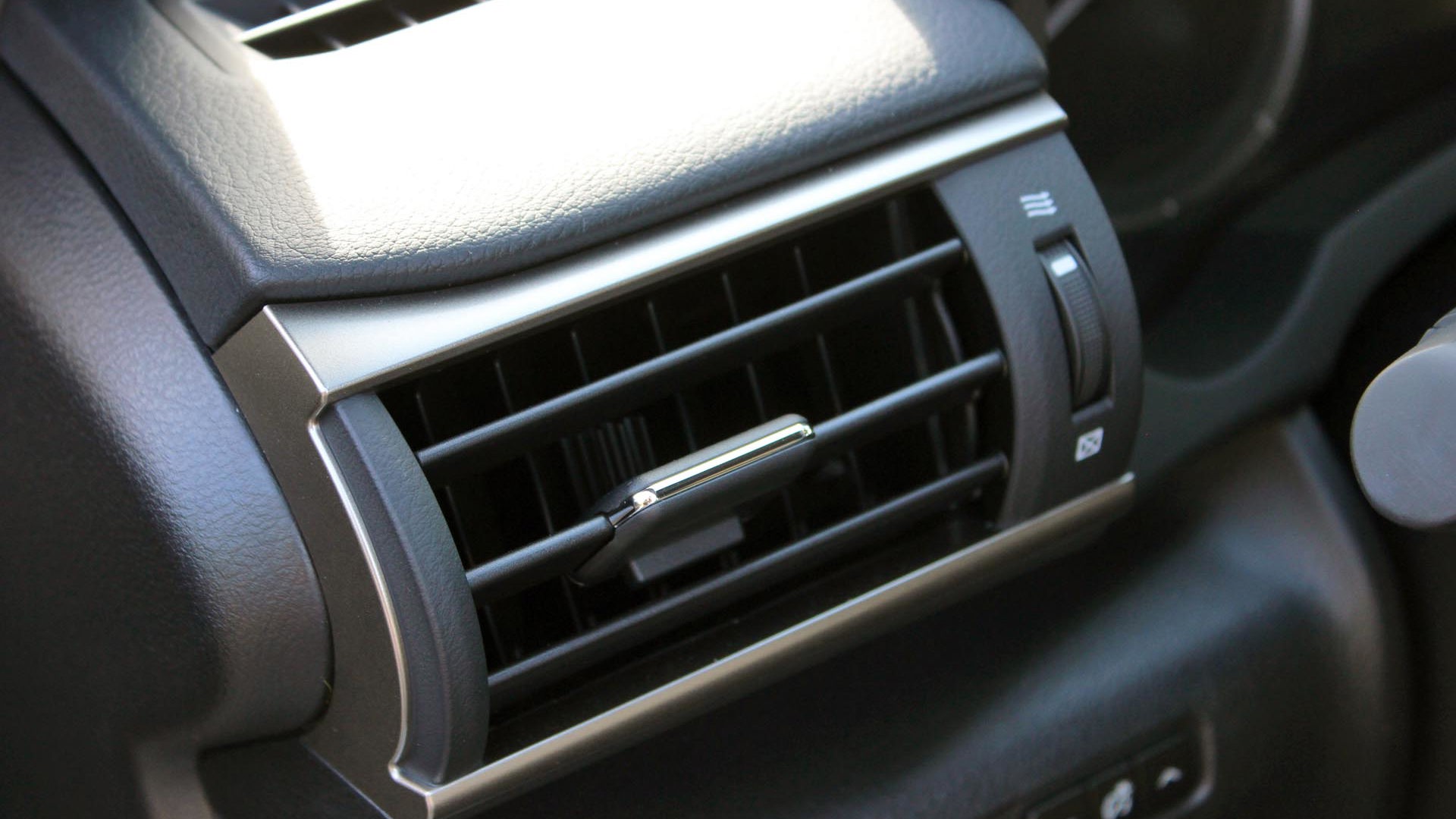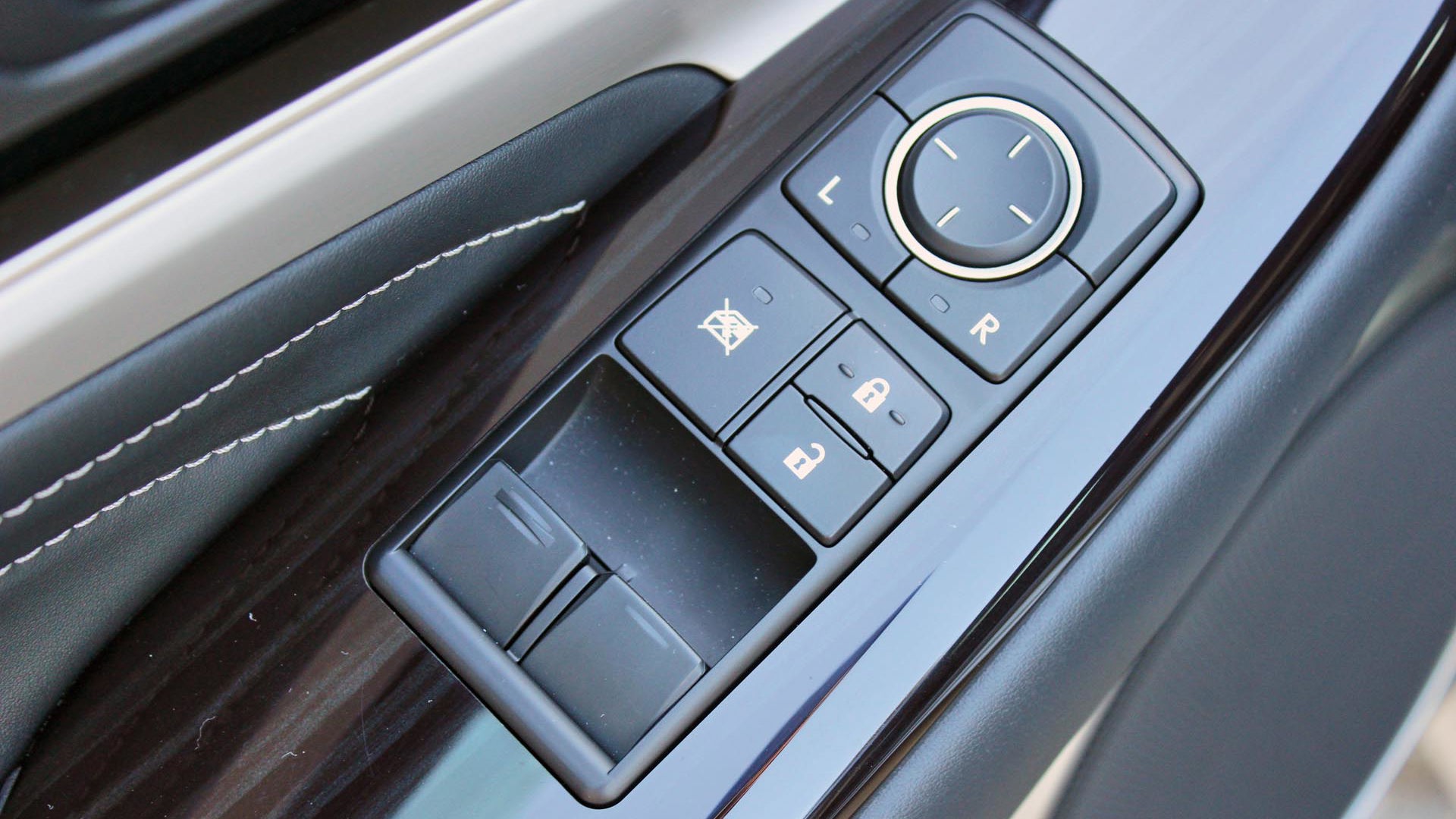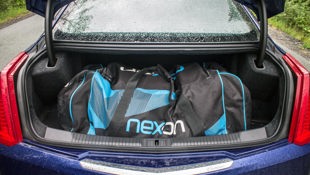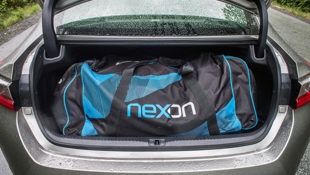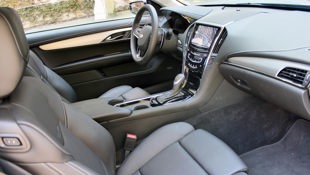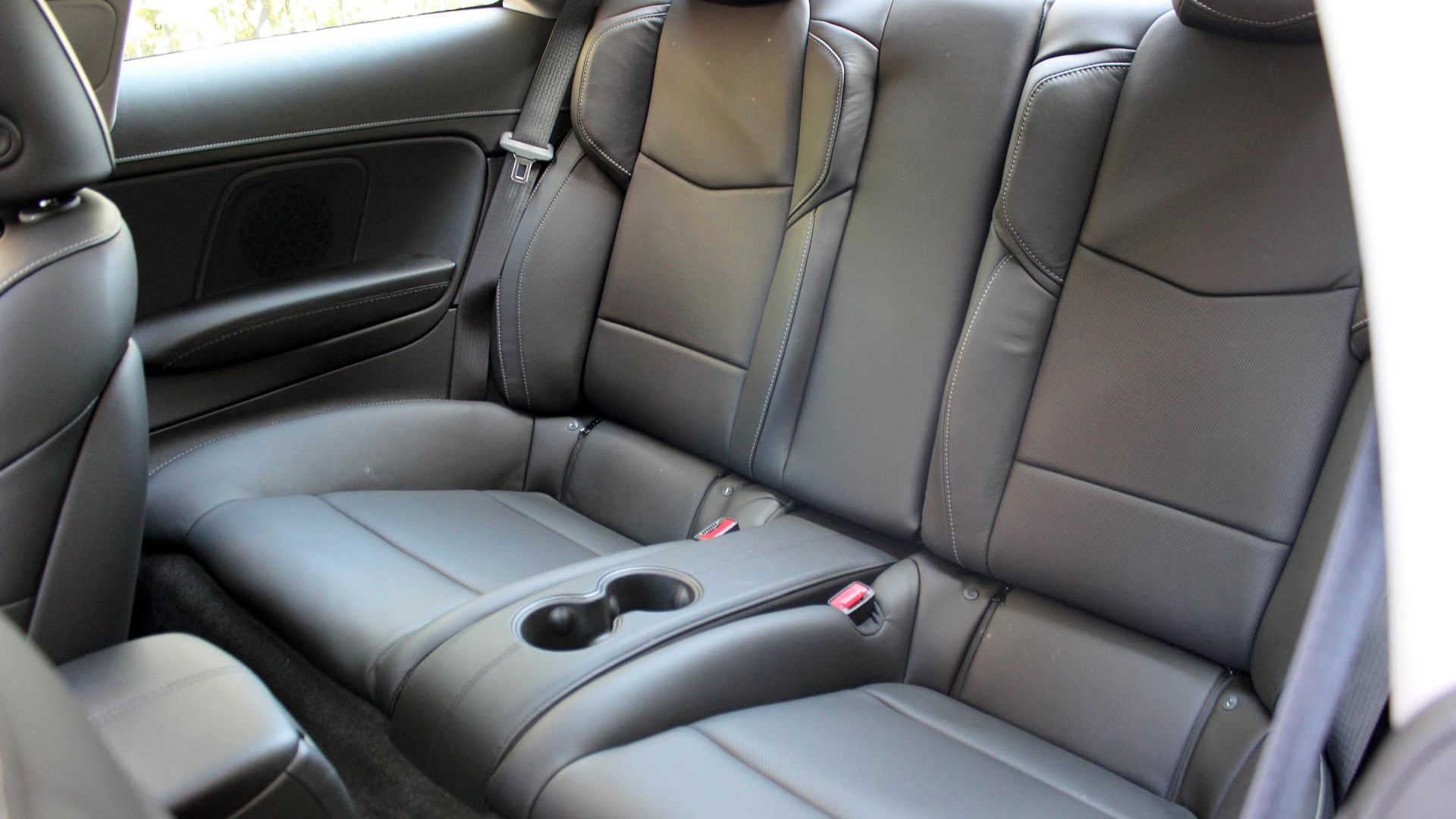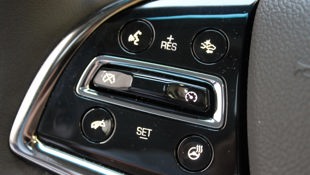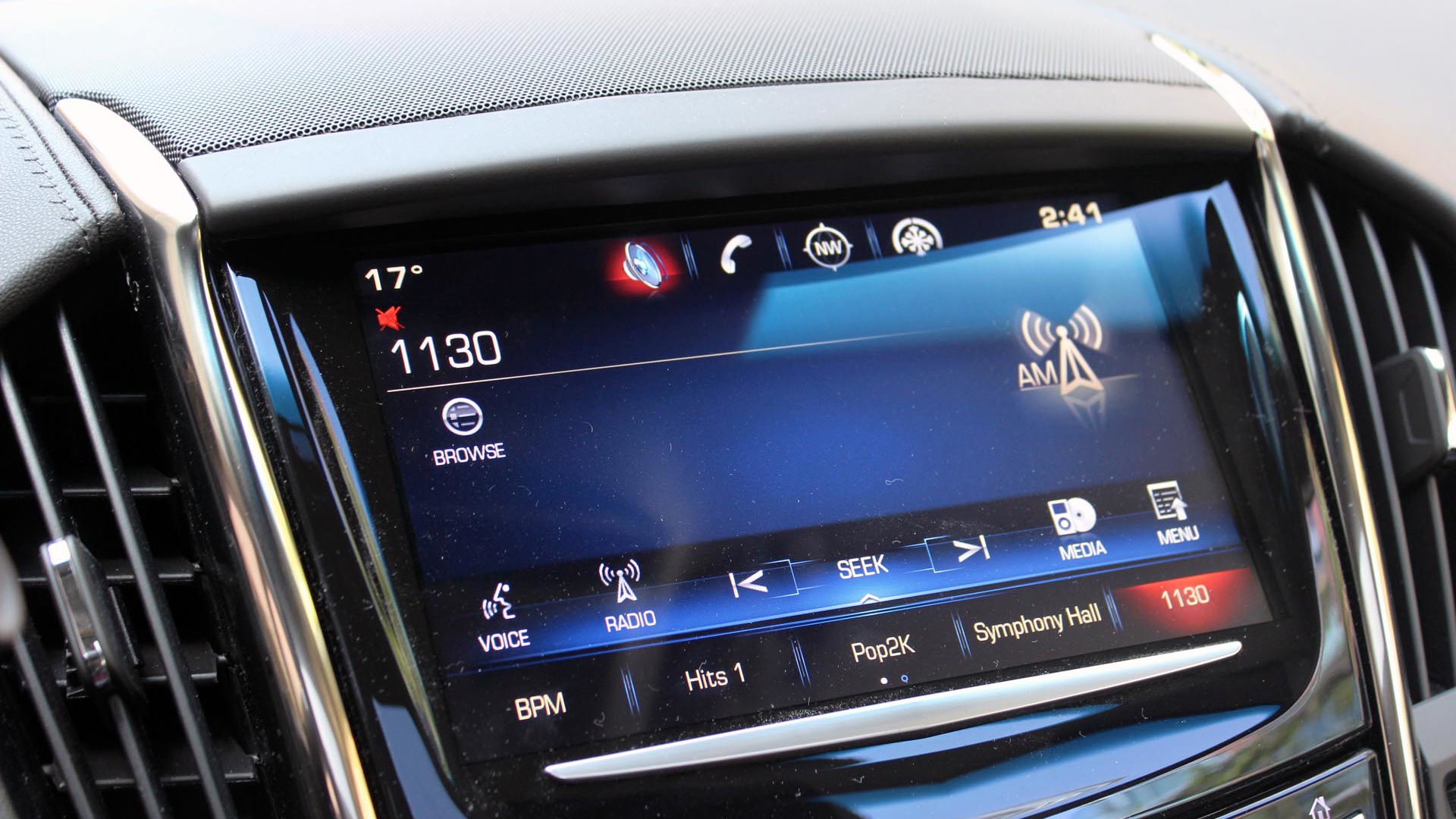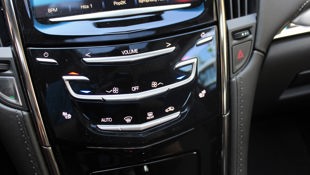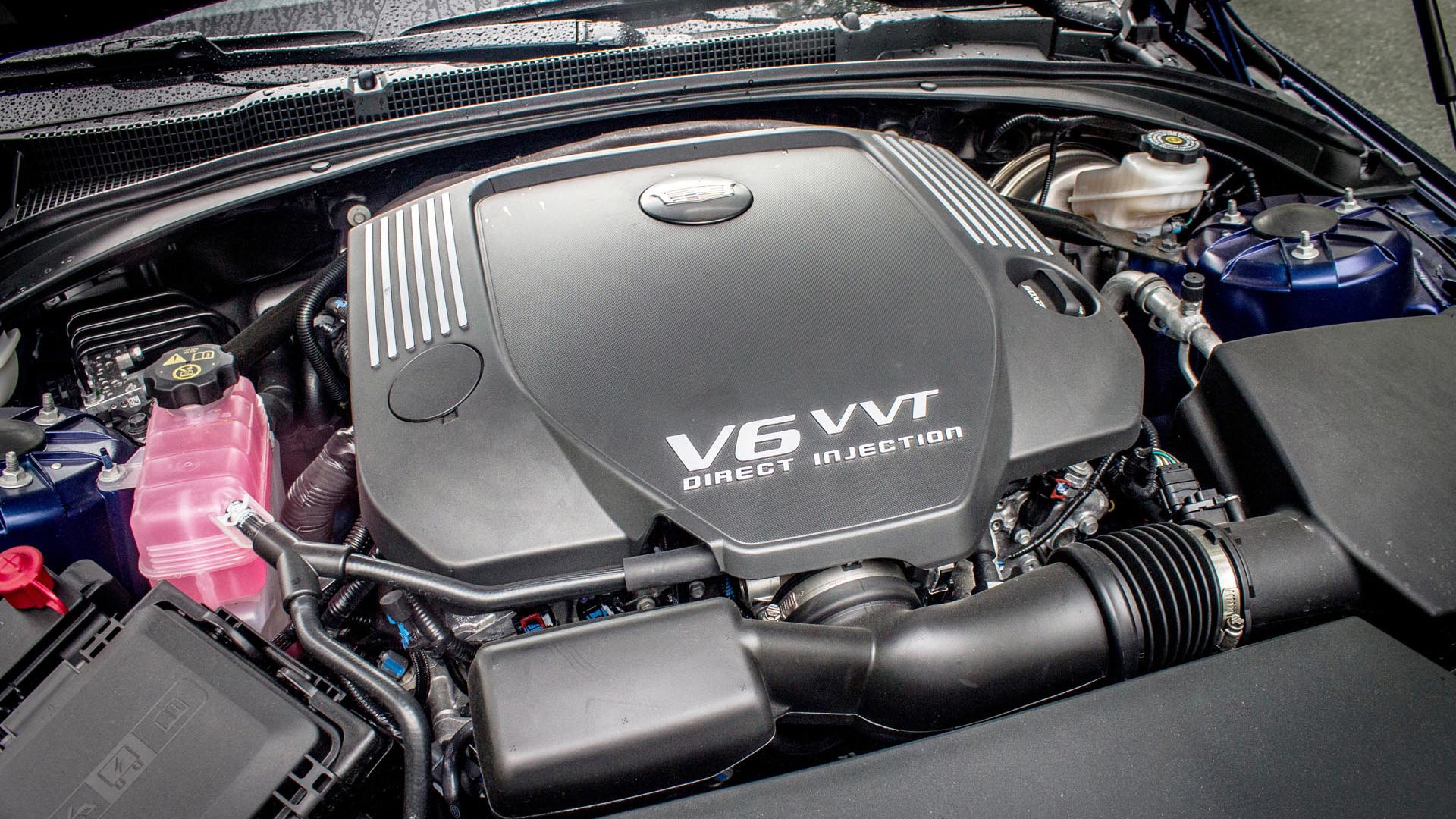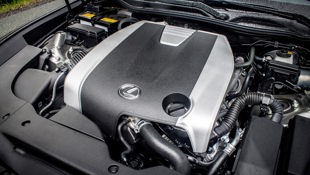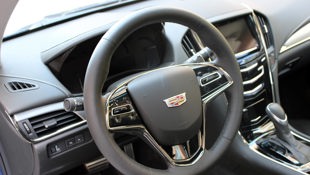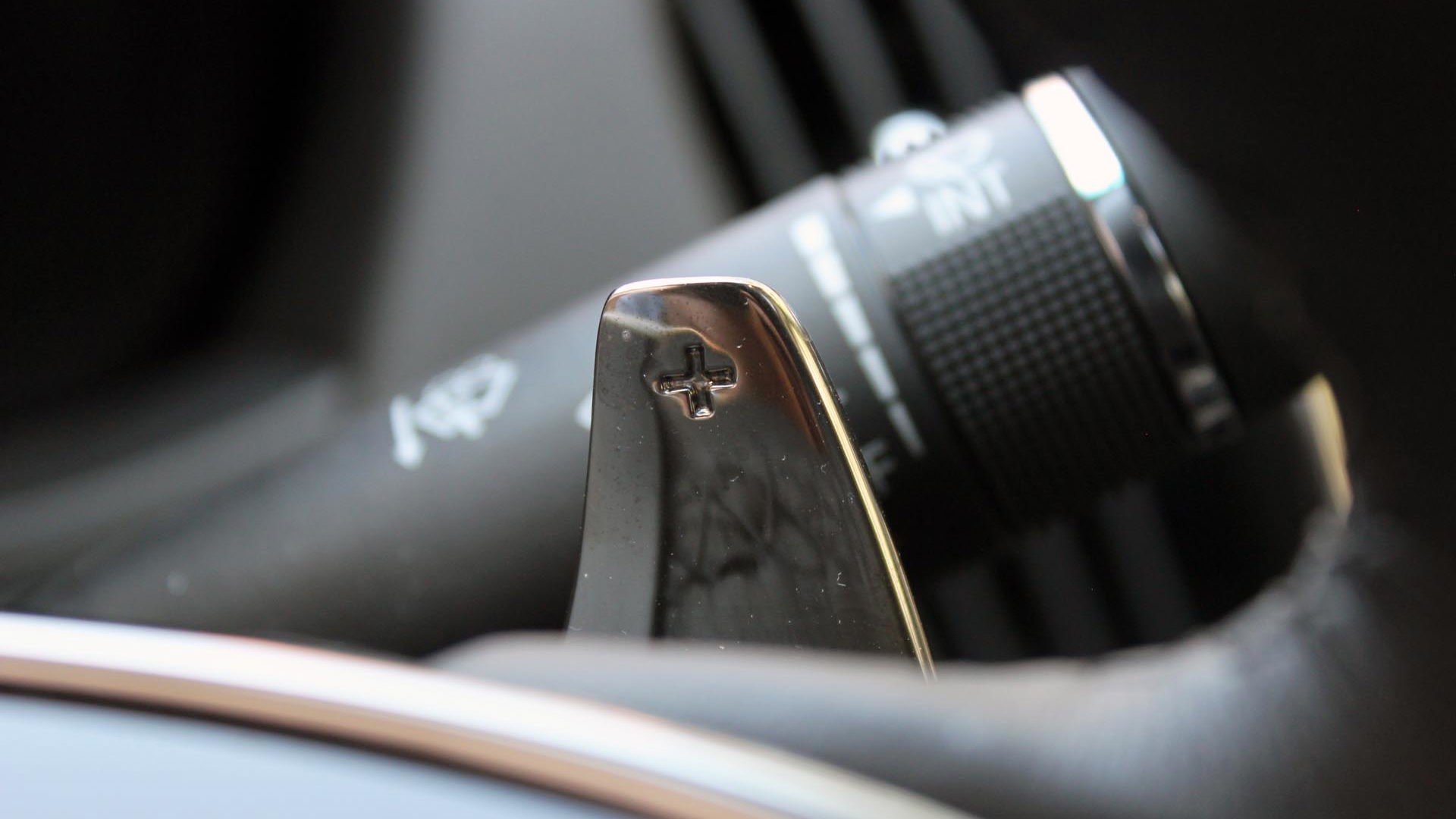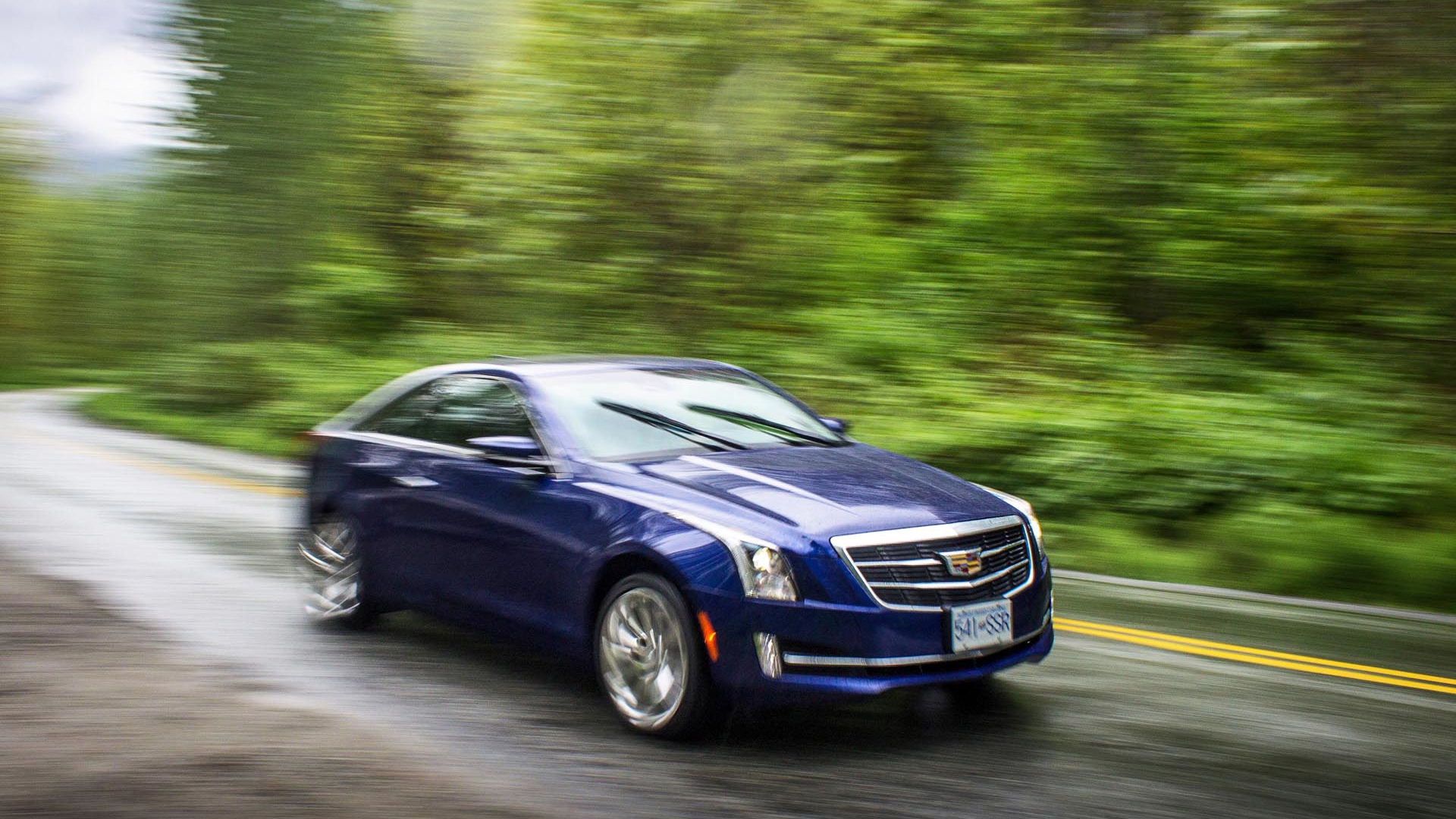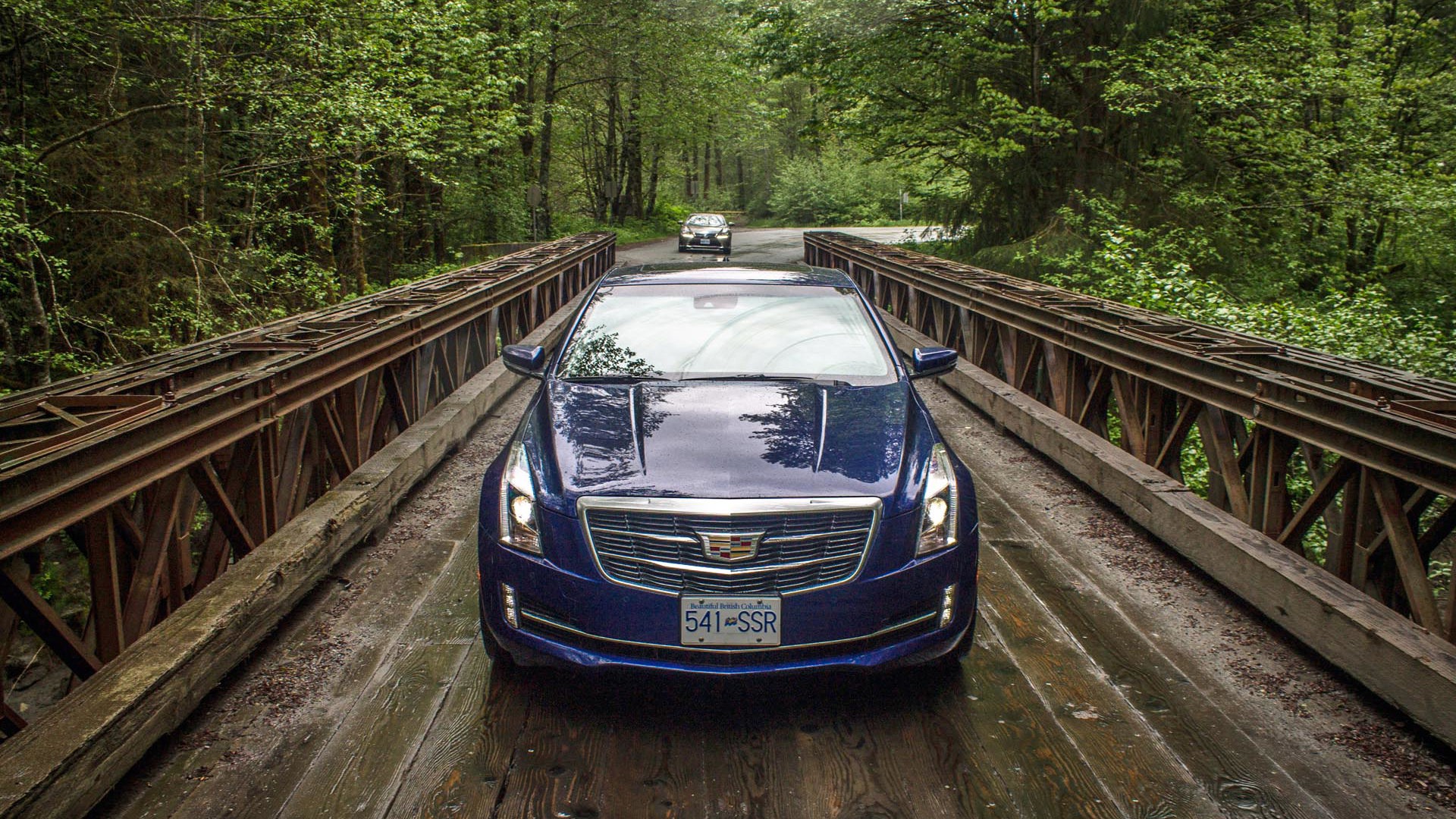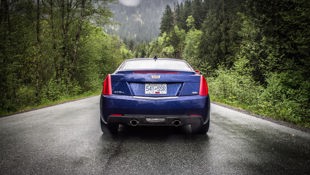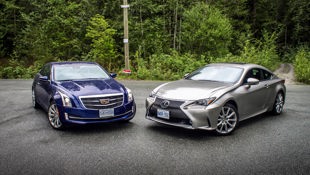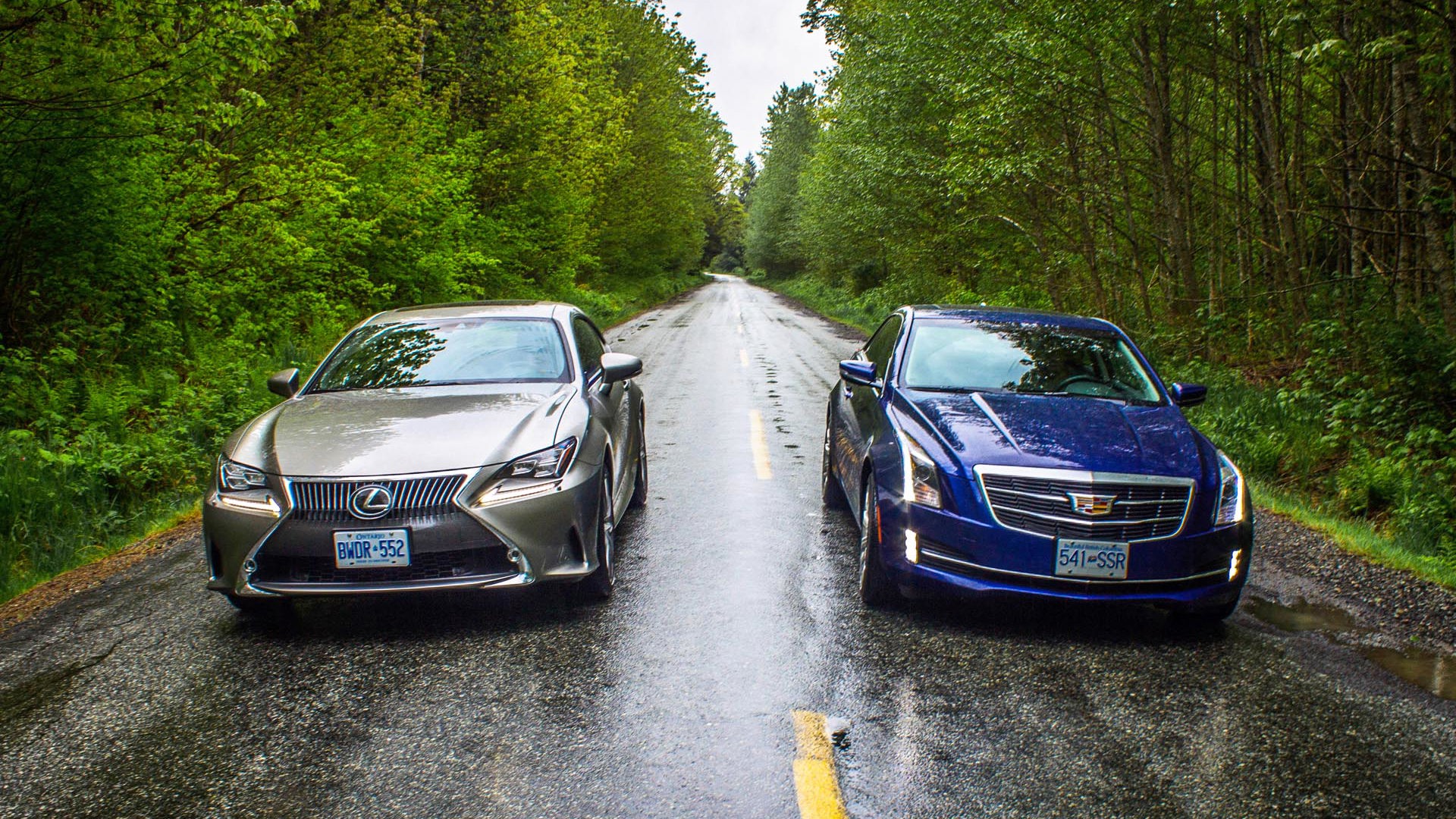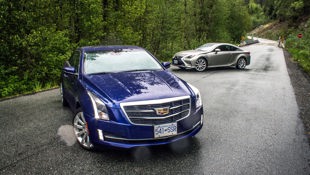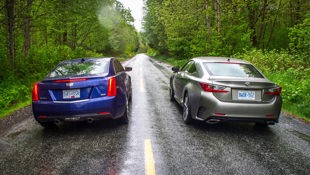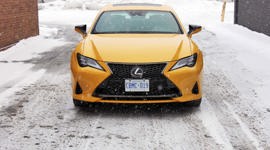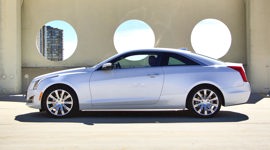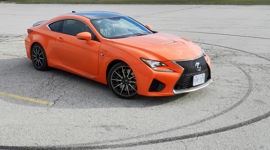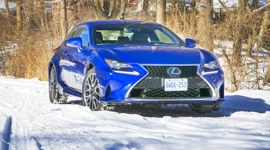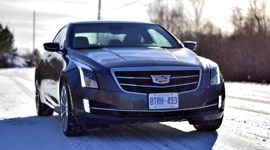Comparison Data
|
Base Price
$54,000
|
$52,795
|
|---|---|
|
Optional Equipment
Executive Package (17-speaker audio, lane-departure alert, radar cruise control, rain-sensing wipers, LED headlamps) – $7200
|
18” polished wheels - $630; Cadillac CUE infotainment and navigation - $1105; sunroof - $1395 – total $3130
|
|
A/C Tax
$100
|
$100
|
|
Destination Fee
$1995
|
$1,800
|
|
Price as Tested
$63,295
|
$57,795
|
Review and photos by Dan Heyman and Brendan McAleer
Both represent relatively uncharted territory for their manufacturers.
Dan says:
What we have here are two cars that are similar on many fronts, but the main thing about their resemblance is the fact that they both represent relatively uncharted territory for their manufacturers.
The ATS compact sedan was already a bold move for Cadillac, since it had to be good enough to assuage fears that we were witnessing the resurrection of the dreadful Cimarron, which was the last car Caddy had in the segment—but a compact luxury coupe? No way. It had never been done before, unless you consider the Allanté. Which is pushing it, because, well, that car had no top.
For its part, Lexus is even less experienced in the compact luxury coupe department. Yes, a hardtop convertible IS C was sold alongside the previous-gen IS, but that car’s bloodlines were easy to see; the RC, for its part, is a whole different animal, as it borrows from various other Lexus models, as opposed to just chopping two doors off of an IS sedan.
This should be interesting.
Styling
Brendan says:
Interesting? Um, yes. You could say that. The RC350 is the most interesting modern car I have ever clapped eyes on, and probably should not be viewed without some sort of protective eyewear. Let me put some on – Ach! My eyes! The goggles do nothing!
A luxury coupe is as much an expression of style as it is of sporting intent, and in this regard you'd never fault the Lexus for being short on expression. It is simply crammed with details, from air vents to multi-faceted headlights, to Nike Swooshes of LED war-paint, to fender-flares, to complex compound-curve sheet metal. It's a lot to take in; too much. The worst offence to good taste can be found around back, with the do-nothin' fake feathery air-ducting in the rear bumper. I hereby dub these car-butt-lashes.
However, as much as the RC appears to be part Battlestar Galactica extra and part H.R. Giger nightmare, people on the street seem to like it. It is visually exciting. It is wild and outlandish. Beautiful? Not even close, but striking and stunning? Absolutely. Like, for instance, a cricket bat to the face.
The ATS is similarly unique, but much more toned down and conventional. The vertical light-lines drawn by the LED daytime running lights give the Caddy some unique road presence, but the more I gaze at the new larger shield up front, the less I like it. The rear three-quarter and side-profile are the best views of this car, where its buffed down angular design language works best.
The blue paint our tester came in was stunning, a fresh new look for a Cadillac that has nothing to do with the personal luxury land-barges of the past. However, chrome details on the door handles and those 18-inch polished alloys are a bit old school, and clash with the new-image shape.
Which car dares more greatly? Lexus.
Interior and Comfort
Dan says:
To put it plainly, both cars are quite good in this department.
The seating position is good in both, but the Lexus wins out, both for front and rear passengers.
For the rear passengers, it’s a win because, well, they can actually get back there without Olympic gymnast creds, as is required in the Cadillac. Worse still, the Caddy’s seatbelts are designed so that they’re anchored at the seat base, but across where the rear passenger would be stepping to get to their seat. So now you’re dealing with the door pillar, the seatback and the seatbelt, not to mention the rakishly low roofline ready to crack your head. It’s a little much, and it’s snug back there so it just goes to show that the ATS Coupe isn’t really meant to haul four people on the regular. Not if they plan on staying elegant once they pull up to the ball, anyway.
While not cavernous by any means, the RC’s rear seat experience is a step above the Caddy’s, even though the latter actually has more legroom. I chalk it up to the Lexus’s deeper rear buckets, which allow for a lower seating position and less bumping against the headliner.
For drivers and front seat passengers, however, the experience in both cars is a nice and airy one, and indeed, front headroom is almost identical in both, while the RC beats the ATS to the punch in the legroom department (which is probably why the reverse is true in the back seat’s case). The same goes for the Lexus trunk, which gets a nice opening large enough for an adult-sized hockey bag and has a flat loading floor.
Not so the Cadillac, which has ridges on its floor and requires you to squish said hockey bag into the opening. Both cars get covered trunk hinges, though, which is great as it makes them that much easier to load. I mean, how many times have you shoehorned a load into the trunk, only to realize you can’t close it due to the hinges being jammed open? That’s not an issue with these two.
The Lexus’s taller windows also make it easier to see out of (both cars maintain big over-the-shoulder blind spots due to the aggressively-raked C-pillars, however), as do the wing mirrors. These are way, way too small in the Cadillac and make the items found on the Lexus look like they belong on a pickup truck. With a tow package.
Brendan says:
From a styling and quality feel here, both cars are again a mixed bag. The Lexus is again a somewhat overstyled effort, although if you delight in surprises and hidden details, it's very good. Fit and finish are also excellent, and if the display looks a little dated, the instrument cluster is fresh.
Pretty much the reverse is true with the ATS – many cross-shoppers will climb into this car, take one look at that instrument cluster, and mosey on back to the BMW dealership to lease yet another 3 Series (oh, they're calling it a 4 now? Whatever… same again, please). That's a shame, because the rest of the little Caddy's interior shows promise. Real materials are used, the stitching is unique, and it all looks made to a premium grade. However, again Cadillac lets down the side a bit with fit and finish around the upper air vents on the dash. This is a car hugely improved over past efforts, but some fine-tuning is still needed.
Both cars are, like all modern vehicles, dominated by their infotainment, about which Dan will go into in detail below.
Dan says:
With the ATS, as with any other new Cadillac products, talk of tech pretty much boils down to one thing: the Cadillac User Experience interface, or “CUE”.
It’s a touch-and-talk setup: you can make use of the touchscreen or touch-sensitive console for your climate and infotainment needs, use the steering wheel buttons and gauge cluster readouts for audio and more, or try to decipher the voice command code phrases and particular intonations that this talking computer understands. Your experience with it really depends on how comfortable you are with touchscreens, and how much patience you have. I give Caddy credit for providing nice, big ‘buttons’ that are arrayed in a mostly logical manner.
However, while some tactile feedback is provided, it remains as difficult now as it’s ever been to determine whether an input has been received or not. Too often, I found myself sitting there, prodding the screen like a crazy person trying to get my destination entered into the navi system. Never before have I been so happy that so much of this can be avoided with voice commands. Takes a little while to learn those, though.
The Lexus takes a completely different tack, but one that breaks with the traditional knob and button setup almost as much as CUE does.
Instead of a touch screen or console panel, with the RC, you get a touchpad that works like a mouse would; the “cursor” on screen snaps to whichever button’s closest, and you click the pad, much like you would on an Apple laptop. It’s not bad, and it manages to reduce clutter while at the same time being fairly easy to use. It also has some decent haptic feedback that lets your finger know when it is locked on a menu item.
Our RC 350 tester’s $7,200 Executive Package, meanwhile, provides a power tilt & telescoping steering wheel (very nice; the Caddy’s is a manual set-up), 17-speaker Mark Levinson audio, lane departure alert, and dynamic cruise with pre-collision warning.
Performance
On paper, it’s almost a wash; both cars get naturally aspirated V6 engines, with the Cadillac’s 3.6 making 321 hp and 275 lb-ft of torque, the Lexus’s 3.5 good for 307 and 276. Both have all-wheel-drive systems mated to automatic transmissions with six speeds, although if you spec your RC with RWD, you get an eight-speed unit. Finally, both are around the same size, with the Lexus sitting a little narrower, but a little longer than the Caddy.
And, of course, both sit firmly in the junior executive segment, a spot normally reserved for the Germans. So there we go; back into uncharted waters again.
Just by looking at them, however, it’s hard to determine, really, which the better performer should be. The Lexus, with its big, straked bumper inlets? Or what about the ATS Coupe, whose stance looks so serious from behind? Both are pretty purposeful, and each manufacturer should be proud of what they’ve accomplished in this regard.
Once you set off, however, it becomes a little easier to define the two. The Cadillac, for starters, is the louder car, with a nice, slightly metallic exhaust note that has obviously been tuned for those wanting a little more from their sports coupe in the auditory feedback department.
The Lexus is quieter at the outset, but as you start to delve deeper and deeper into the powerband, the RC, too, begins to make its presence felt as the engine is allowed to breathe a little more freely.
Having said that, while both cars feature almost identical claimed 0-100 km/h times, the ATS feels like the faster car; could be thanks to the noise, but it’s more likely thanks to it being the lighter of the two cars, by just under 200 kilos.
It’s quite surprising, actually, just how fast the Caddy feels as you really start to get on it; the naturally breathing V6 reaches peak power at 6,800 rpm, peak torque at 4,800 and the engine really is a free-revving dynamo. The Lexus, however, actually reaches peak power 400 revs sooner, but again, the added weight ensures the Caddy feels the zippier of the two in a straight line.
With luxury sports coupes like these, however, an all-out assault on the senses isn’t necessarily what the doctor ordered for every customer.
In that light, the Lexus wins out in the refinement department. The engine’s a little quieter, yes, but road and wind noise is also reduced. It also rides smoother, has a fantastic sound system (who cares about engine noise when you have a sound like this) and provides an overall feel of luxury as opposed to sporty rambunctiousness, like the Cadillac.
Indeed, it’s here that we first see a divergence – a real divergence – between these two cars. The thing is, one of them is used to appealing to its crowd (40-something empty nesters, we’ll say) and the other is going for a slightly younger customer base. Can you guess which is which?
If you guessed that the Lexus knows its market, then you’d be right. Cadillac, however, is very open about just who they’ve got in mind for the ATS Coupe, and that’s younger professionals that would normally buy a BMW 3 or 4 Series. And that means it has a bit of a steeper hill to climb. The Bimmers have been at the top in this segment for a long time, and they know what they’ve got to do to stay there. The Cadillac has some in-house competition, too, in the form of the ATS Coupe with a 2.0L turbo four-banger, and a manual transmission available with this base powertrain.
Both Brendan and I agree: that’s what the younger buyer is likely to go after. I will take it one step further, however, and suggest that if a buyer looking for a little more athleticism from their coupe were to give the Caddy a try – yes, V6, automatic, and all – the decision may not be quite so black and white.
Handling
You see, the ATS Coupe V6 is a fantastic handler. The steering rack, even though it’s electrically boosted, is direct and actually manages to maintain some feel, which is often a difficult task when dealing with electric power steering racks.
So, the ATS, even with the added weight of the V6, will switch directions at a second’s notice, and it makes tackling the twisties that much more enticing.
The Lexus’s steering, on the other hand, is in a different time zone. It’s slower, maintains much too large an off-centre dead zone and provides almost no feel whatsoever. I’m serious when I say that the confidence I had in the car beneath me took a big, big hit with the RC 350 because I just never got the feel for what it would take to even come within 3/10ths of its limitations. That’s disconcerting.
It’s not like the steering is finger-light at low speeds, either; it takes a surprising amount of elbow grease to maneuver around car parks and the like. It’s a strange dichotomy.
Brendan says:
Simply put, the ATS blows the RC out of the water. I've just driven the hottest version of the Lexus, the RC F, and while it was a fun and interesting machine with a few flaws, I already know that the ATS-V is going to eat it alive based on the dynamic differences between these two.
Chevrolet is positioning their Alpha-platform Camaro (same underpinnings as the ATS) with the V6 as the performance option, so if you want a really nicely equipped pony car with available all-wheel drive, take a look at the ATS. It's a backroads brawler in a tux, eager to up the revs and snort down this damp spaghetti noodle of tarmac as quick as you want to go. Grip is high, but confidence is higher. Excellent car, though I'd be having a little more fun with the rear-drive turbo version, which actually has piles more torque (295 lb-ft).
Interested in the RC F? 2015 Lexus RC F Test Drive
The RC can be hustled, but it isn't made to do so. Curiously, I recall the four-door IS feeling a bit more lively than this coupe version. You don't expect a Lexus to have razor-sharp steering feel, but then you might expect a bit more spirit given the fiercely grimacing exterior. All show and no go, I'm afraid, although the V6 makes a great noise and is no slouch at passing.
No, if Cadillac benchmarked the previous-generation E46-chassis BMW 3 Series for driving feel, then Lexus has photocopied the current-gen 3 for sales figures. Let's switch to a different kind of performance yardstick: for older buyers (you know, the ones who actually have money), the RC is smoother, more comfortable and less frenetic. It's a cruiser to Caddy's carver, and I'll go ahead and suggest that most shoppers in this segment aren't looking to set lap times.
Dollars and Sense
After our run up and down to Squamish and that bit of damp backroad blasting, our two vehicles returned fuel economy figures that were within a thimbleful of each other. That's not particularly surprising – both V6s are very close in displacement, and both are mated to six-speed transmissions and all-wheel-drive systems. Official ratings for the RC 350 are 12.6 L/100 km city and 9.1 L/100 km highway; the ATS is rated at 12.8 and 8.9. Even in these times of relatively cheap fuel, an additional point in favour of the ATS is that it does not require premium.
Consumption is too close to call, but price tag is not. Equipped as it was with the hefty $7,200 Executive package, our RC was $5,000 more than the Cadillac, essentially a 10-percent gap. Still, features like adaptive cruise control and a 17-speaker audio system don't quite qualify as essentials, and navigation-equipped versions of both vehicles are extremely close in price, each hovering right around $55K.
Neither is really good value for money, not unless measured against the German competition, where optional add-ons can send prices skyrocketing. Both will also likely be leased rather than purchased by the majority of owners, somewhat eroding the Lexus's inherent resale advantage. I also feel like the extreme visual violence of the RC will mean it won't be the used-car-lot champ that the RX crossovers are.
The Cadillac is the better deal, but as expensive as it is in this trim, the RC is more demonstrably a better buy than a BMW or Mercedes to its intended target audience. The guy who's been driving an RX for ten years will walk into the showroom and like the RC better than a 4 Series. The ATS will be a tougher sale, and require strong incentives and cash on the hood to move.
Conclusion
This is one of those not-infrequent occasions where the car we both preferred does not finish first. The ATS is so dynamically superior to the RC, that were this a test of sports cars, it'd be a slam-dunk victory. No contest – if you like to drive, Cadillac is selling the car you want.
However, these aren't stripped-down enthusiast machines, they're loaded-up, high-feature expressions of style. Competence is expected, of course, but the weighting of performance is less important than the way the whole works together. That's particularly true of these two, which aren't intended to woo away the buyer who's looking at an M-Sport 428i with a stick shift, but rather to provide a sporty-looking machine to a perhaps-older buyer. All-wheel drive for competence, premium leather appointments, lots of available tech – these are supposed to drive nicely, but it doesn't matter which one's got the better Nürburgring time.
As such, the Lexus is the champ despite being divisive on styling, and slightly lackadaisical to drive. It's comfortable, it's smoother, it feels better constructed inside. With the ATS, I feel like I would be recommending a lower trim variant, not defending its dynamic superiority versus tech and interior quirks.
The RC is the car Lexus decided it needed before yet another crossover, an expressive two-door to show their brand had a sense of style and fun. It's not the better car to drive, but we feel that it'll fill its target market's needs better.
| 2015 Lexus RC350 Warranty: 4 years/80,000 km; 6 years/110,000 km powertrain; 6 years/unlimited distance corrosion perforation; 4 years/unlimited distance roadside assistance |
| 2015 Cadillac ATS4 Coupe Warranty: 4 years/80,000 km; 6 years/110,000 km powertrain; 6 years/unlimited distance corrosion perforation; 6 years/110,000 km roadside assistance |
